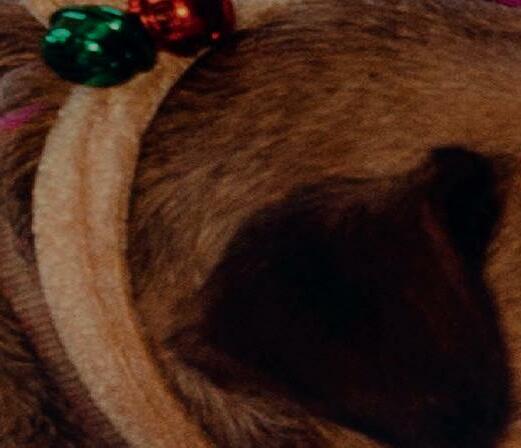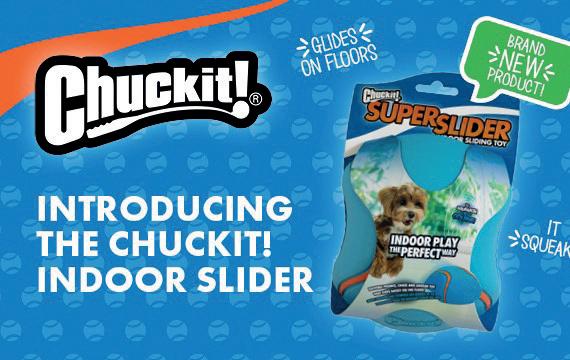
















































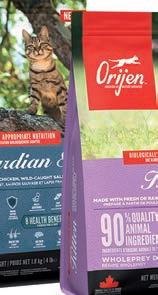































































































































































































































This month is the December/January double issue of Pet Product Marketing, meaning the next issue of the magazine will be with you in late January. A double issue works really well at this time of year because if we did them separately, the expected publication date of a standalone January issue would be December 25th!
Everyone has bigger things on their mind and by having a double issue means we can prepare for the festive season, then regroup and look forward together in the new year once 2023 has properly arrived.
So, I hope that when you read this that festive trade is getting into full swing and that is helping to build your own Christmas spirit too! In this issue, we’ve got some excellent care tips for helping dogs cope during the busy festive period. Feel free to use these on your social media to give your presence a boost. We’re looking to provide free content you can use at key times of the year to give your online interactions that something extra.
Elsewhere in the issue, there are some cracking features. So be sure to keep hold of the magazine for when you get five minutes during this
4 News
The latest news from the pet industry.


8 New products
There are exciting products hitting the market.

12 Hagen Q&A

We talk about the importance of eco-friendly products. 14 UK Pet Food
An exclusive look at how the pet food trade association has adopted a new identity. 16 Christmas care Tips on helping dogs cope with the festive period you can share online. 18 10 things you should provide for your cat We look at feline essentials. 20 Mind your manners A look at how we can help dogs learn appropriate behaviour. 22 Countdown to Christmas How to provide festive appeal to small animal owners.
busy period:
● Gain inspiration for new products — we’ve four pages of exciting new lines

● Exclusive feature on UK Pet Food — get an insight into the pet food trade association and a steer on where that key industry is headed




● Learn more about the importance of eco-friendly products — we chat to leading brand RC Hagen about why green credentials count



● Support women in the workplace — we look at how businesses can give women the best support when pregnant or going through menopause

● Plus loads of pet care advice to share with your customers!
Have a fantastic Christmas – in a business sense and a family one!
See you in the new year,
MikeMike Hallam - Editor, PPM. michael.hallam@warnersgroup.co.uk


Our email: editorial@petproductmarketing.co.uk
Our address: Pet Product Marketing, Warners Group
Publications, The Maltings, West Street, Bourne, Lincolnshire, PE10 9PH
Michael Hallam, editor (for news and product releases, contact Michael on michael.hallam@warnersgroup.co.uk)
For advertising queries please contact Stephen Tanner on 01778 392404

Laura Wright, features and web editor
Ellis O’Connell, marketing exec
With grateful thanks to Sarah Wright (editor, Your Dog), and Nathan Hill (editor, Practical Fishkeeping)
Nigel Fish, design and production manager

Natalie Reynolds, production controller Graham Warren, colour repro
Stephen Tanner, key account manager (advertising Pet Product Marketing/Practical Fishkeeping) Andrea Walters, key account manager (advertising Your Dog/Your Cat)
Kay Cotterill, classified sales (all titles)
Regular contributors: Adam Bernstein, Claire Hamblion and John Courteney-Smith
Printed by Warners Midlands plc James Buzzel, publisher
Subscriptions and back issues
Pet Product Marketing is available free to people who qualify for our controlled terms of circulation. If you’d like to register for a free subscription, please visit www.petproductmarketing.co.uk
Pet Product Marketing is published 10 times a year by Warners Group Publications. No part of the magazine may be reproduced in any form in whole or in part, without the prior permission of Warners Group Publications. All material published remains the copyright of Warners and we reserve the right to copy or edit any material submitted to the magazine without further consent. The submission of material (manuscripts or images etc) to Warners Group Publications whether unsolicited or requested, is taken as permission to publish that material in the magazine, on the associated website, any apps or social media pages affiliated to the magazine, and any editions of the magazine published by our licensees elsewhere in the world. By submitting any material to us you are confirming that the material is your own original work or that you have permission from the copyright owner to use the material and to authorise Warners Group Publications to use it as described in this paragraph. You also promise that you have permission from anyone featured or referred to in the submitted material to it being used by Warners Group Publications. If Warners Group Publications receives a claim from a copyright owner or a person featured in any material you have sent us, we will inform that person that you have granted us permission to use the relevant material and you will be responsible for paying any amounts due to the copyright owner. We cannot accept responsibility for unsolicited manuscripts, images, or materials lost or damaged in the post. While every reasonable care is taken to ensure accuracy, the publisher is not responsible for any errors or omissions, nor do we accept any liability for any loss or damage, however caused, resulting from the use of the magazine.










Mars Petcare, part of Mars, Incorporated, has announced that it has signed a definitive agreement to acquire Champion Petfoods, a leading global pet food maker.

For more than 35 years, Champion Petfoods has been a pioneer in biologically appropriate pet foods to nourish dogs and cats the way nature intended them to eat naturally in the wild. Champion Petfoods’ two premier brands, ORIJEN and ACANA, have built a strong and trusted reputation in more than 90 countries, growing rapidly as pet owners increasingly seek out nutrient-rich pet food.
Ikdeep Singh, Global President of Mars Pet Nutrition, stated: “We are thrilled to welcome Champion Petfoods and its more than 800 talented people to the Mars Petcare family. The Champion Petfoods team has been a pioneer in developing high-quality and premium pet food in the natural category that pet lovers around the world trust. Together, we will be even better positioned to support pet lovers and fulfill our purpose to create A BETTER WORLD FOR PETS™.”
Mars Petcare is a purpose-driven global business serving pets and pet owners through products and services within veterinary health, nutrition, innovation, and technology. Supported by the Waltham Petcare Science Institute, Mars Petcare has been advancing research into the health of pets for over 50 years.
Blaine McPeak, Chief Executive Officer of Champion Petfoods, stated: “We are excited to join Mars Petcare and become part of a world leader in pet nutrition and services. This announcement is a wonderful way to recognise all the employees over our history who helped build Champion into a pre-eminent global pet food company with our incredible brands ORIJEN and ACANA. We look forward to working with Mars Petcare on taking Champion to an entirely new level.”
The terms of the transaction were not disclosed. The transaction is subject to customary regulatory approvals and expected to close in the first half of 2023. For more information about Mars, please visit www.mars.com



OATA has launched a revamped package of customer care information and business guidance for the ornamental aquatics industry at a special event at the Houses of Parliament.
OATA took the opportunity to showcase its updated and expanded range of free customer care sheets and how-to guides during an event focused on animal welfare organised by the Companion Animal Sector Council (CASC).
OATA now has just shy of 70 free customer focused leaflets, the largest selection produced by a pet trade association. The trade association has expanded the number of species-specific caresheets and broadened its number of how-to guides to include more on testing water quality, a key component for success when keeping pet fish.
Alongside expanding and improving its customer facing literature, OATA has also reviewed its guidance for aquatic businesses, including its biosecurity document, transport code, and water quality criteria.

OATA said: “We were very pleased to show off our expanded range of customer facing literature during an event to launch the new Pet Know How initiative which is all about educating prospective owners about their new pets.
“OATA now has the widest range of species-specific care literature in the pet trade and these will all be available for free for businesses and pet owners to download both from our website and via the new Pet Know How’s associated Pet Portal.
“We firmly believe educating people to pick the right pet for their lifestyle and care for it properly is the key to happy and healthy pets. So, the more quality information out there, particularly for pet fish which have such a wide range of species, the better it is for both keepers and animals.”
The updated range can be found free to download on OATA’s website (ornamentalfish.org/ what-we-do/advice-information/care-sheets/), along with QR code labels for shop tanks to enable customers to have the ability to download them straight to their smart phone.

Get your FREE counter display unit and 15% off when ordering the full pet range from The Golden Paste Company.
Well known for their natural supplements, The Golden Paste Company has a range of pet products that contain turmeric as the key ingredient. They are specifically formulated to enhance the bioavailability (activating the key ingredients) and it also offers a source of natural antioxidants.
The Pet range includes Turmeric Golden Paste, Turmeric Capsules, TurmerEase™ and TurmerItch™. Turmeric contains high levels of Curcumin, which provides natural anti-inflammatories and is ideal for supporting joint health. Other benefits include maintaining general well-being, aiding digestion and helping to maintain a healthy and shiny coat.
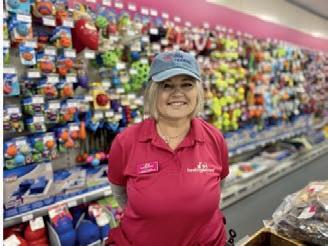
For further information, contact The Golden Paste Company on 01423 503319 or visit www.goldenpastecompany.com To place an order and claim your FREE CDU, email: sales@goldenpastecompany.com
ASouthampton-based pet food and accessory retailer has welcomed a dog-training star to its team in a bid to become the leading pet store across the south.
Healthy Pet Store based in Totton is on a mission to be the cornerstone of pet knowledge and expertise across Hampshire, influencing the lives of dogs, cats, and their owners in positive ways.
There has been a round-of-a-paws for Healthy Pet Store which welcomed Hampshire dog trainer Anita Takacs to its customer advisor team, providing owners with the most up-to-date expert advice and knowledge.
Anita Takacs is a professional dog trainer and body language instructor who focuses on care, compassion, and commitment.
The Hampshire-based trainer donned the team’s signature pink t-shirt and gave expert advice to customers about enrichment products and training gear and training tips.
Deborah Burrows Managing Director said: “Anita has been a real asset to the team. We want to support, advise, and guide caregivers as much as we can and Anita has really ramped up our expertise.
“Being able to offer the best customer service and advice is crucial to our ethos because the well-being of pets is at the heart of everything we do.”
Anita added: “I have loved my time with Healthy Pet Store so far. Getting to help the customers and their animals is so rewarding and I love being able to share my knowledge far and wide. I want to make a real difference to animal well-being by sharing tips and tricks with as many caregivers as possible.”
Fun Staffy Dog Training offers a range of courses on puppy training, terrific teens, common dog behavioural issues, and enrichment games. To find out more about Healthy Pet Store visit healthypetstore.co.uk

Leicestershire-based All About Pet Health is set to provide their own label products to two new major players in the pet market following a successful PATS.
The company, who made the finals of the PetQuip Awards in the Supplier of the Year category, currently distributes the successful Naturvet (Overby Farm in the UK) range of supplements, grooming products, and pet aids which are manufactured by the Garmon Corporation USA and recently became part of the global pet organisation Swedencare.
All About Pet Health targets pet food manufacturers, large pet shop chains, smaller multiple independent shops, online pet retailers, and veterinary practices with their products, as well as distributors and stockists overseas.
Dan Mackenzie, founder of All About Pet Health, reported heavy traffic to his stand at PATS. He said: “We are delighted to have picked up two major accounts at PATS. Being part of a larger group, Garmon Corp USA, who is the largest manufacturer of pet health products in North America, enables us to be competitive on pricing, product range, innovation, and customer service. Being part of Swedencare as well enables us to distribute the products throughout Europe.
“We are building our range all the time and our product range is very comprehensive
and many items are what we call ‘problem solvers’ so are niche but very highly rated to solve problems like carpet scooting, chewing carpets, lawn burn, etc. All of our products are formulated by our own veterinarians and materials/ingredients are natural and sustainably sourced.
“Private/white labelling is currently highly popular with our growing client list. We want to become the go to manufacturer for private label customers within the UK. This is a fantastic business opportunity open to anyone looking to set up a pet business or add income to their existing business,” concludes Dan.
You can download a copy of the brochure, visit allaboutpethealth.co.uk/docs/All-About-Pet-HealthBrochure-15.pdf. For more information, visit www. allaboutpethealth.co.uk, call 01892 821007 or email dan@allaboutpethealth.co.uk
Award-winning subscription box pet treat and accessory company Wuf Wuf is now opening up its product range to the trade with a new wholesale operation.
A London-based pet treat and accessory company that offers British made treats, toys, and chews for both cats and dogs is now opening up a wholesale operation which will allow pet retailers the opportunity to stock their best-sellers.

Wuf Wuf and their cat counterpart Mymeow were started in 2018 initially as a subscription box service by a group of business entrepreneurs and pet parents from Turkey who moved to the UK following successful careers in advertising and marketing. One of the Directors, Umut Ihlan, had already set up one of the first award-winning digital marketing agencies in the EU working on international brands such as Turkish Airlines, Opera, and Ulker and in 2017, set up HavHav, the biggest subscription service in Turkey.
Inspired by the success of HavHav, Umut and his colleagues decided to set up Wuf Wuf and Mymeow in the UK. Since launching, the company has acquired over 15,000 regular subscribers to their boxes which are packed with quality treats and toys. Each product is designed to keep cats and dogs happy and healthy as Umut explains: “Our pets need some fun beyond their basic needs. To make them happy, we make monthly themed boxes with premium toys and treats and we tailor the boxes to each pet depending on their size, age, breed, and allergies.
“As a pet parent myself, when I looked at the ingredients of the dog and cat treats on the market I was shocked. They weren’t good at all. Same for the quality of toys so in order to make our pets healthy, I decided to make my own treats and toys. Then I started to do the same thing for my friends’ pets and as a result, Wuf Wuf and Mymeow were born.”
They have created over 50 cat and dog products in two years. It is currently selling over 50,000 pet products a month with a strong monthly retention of 87% with its subscribers. In 2022, Wuf Wuf won the Subscription Business of the Year at the Pet Innovation Awards.
All the toys are designed and produced in the UK or in Europe making them sustainable and are made to encourage healthy play, The treats are made from quality human grade ingredients which are dehydrated to produce natural treats that are grain, sugar and rawhide free.
The business is data driven which means they are able to monitor customer feedback from the thousands of items they send out every day. This allows them to match the requirements of each pet breed, age, and preference. As part of their business model, they also donate to All Dogs Matters every month to rescue a dog.
With the wholesale arm of the business, Wuf Wuf hopes to expand their operation even further. From 2020 to 2021, their growth rate was 300% year on year and they hope to continue that trend going forward by selling into the trade and continuing to design and produce more toys and treats month by month.
Umut concludes: “We want to make Wuf Wuf a global pet brand focusing on making the best possible products for our four-legged friends in order to ensure that they’re happy and healthy. While 90% of our customers are in the UK, we’re currently in 30 countries. All of the EU countries, Switzerland, Turkey, Israel and Japan.”
For more information, visit www.wufwuf.co.uk
The trade association for pet food has unveiled its new identity — UK Pet Food.

Previously known as the Pet Food Manufacturers’ Association, UK Pet Food now better reflects the remit of this dynamic organisation.
UK Pet Food, which has over 100 members and represents 90% of UK manufacturers, will continue to lead the industry agenda while representing the growing interests of a broad range of members.
Michael Bellingham, Chief Executive, UK Pet Food explains: “Creating a new brand identity has been an important journey for us. We value our 50 years of history, but equally we pride ourselves on being a forward-thinking organisation, embracing change and driving it forward. We were keen for our brand to capture this feeling and better reflect who we are and what we are about. Our modern name and bright new look demonstrates our evolution, embracing new members and planning for the next 50 years.”
The UK Pet Food branding focuses on a strong yellow core logo, which reflects a desire to push the industry front and centre. A suite of pet-specific sub logos exist to represent different species with their own contemporary colours. This reflects equality of representation across
MSD Animal Health has launched HomeAgain Thermochip®, its new generation of identification microchip, incorporating a temperature biosensor and HomeAgain® Pet Recovery Database.

At the forefront of microchip technology, the HomeAgain Thermochip enables a pet’s subcutaneous temperature and microchip identification number to be read simultaneously using a compatible microchip reader, while the HomeAgain Pet Recovery Database — which is free of charge — makes it easier for lost pets to be reunited with their owners, whichever microchip they may have.
Compliant with ISO standards and with proven temperature accuracy, the HomeAgain Thermochip is the only microchip on the market that combines identification and temperature monitoring. It has been designed to work for the lifetime of the pet and brings a range of benefits, including the ability to track and monitor a pet’s temperature in a non-invasive, stress-free way and supports easier day-to-day in-clinic pet management.
Mr Michael Morrow BSc BVSc MRCVS, Director of St Vincents Veterinary Surgery in Wokingham, said: ‘’The launch of HomeAgain Thermochip is a real game-changer in the market.
“We have been trialling the Thermochip for some time and it’s now our default option to measure temperature. It’s incredibly useful in everyday practice, particularly when it comes to fractious cats or extremely nervous dogs, and it improves efficiency in consultations. We also use the Thermochip extensively during anaesthetic and post operative monitoring with minimal handling.
“Reassuringly, we’ve never had any issues with the microchip reader or with the chip migrating to other parts of an animal’s body so it’s very reliable.”
For animal identification, the microchip works in much the same way as other microchips. MSD Animal Health aims to have the most comprehensive reunification platform through its DEFRA-compliant HomeAgain Pet Recovery Database. The service provides a multitude of benefits, including:
● A free database service, including registration, transfer of keepership, and updates on contact details
● 24/7 UK-based support to help owners locate their pet if they go missing
● Regular automated prompts to encourage owners to keep their contact details
up-to-date
● Ability to register multiple contacts against a microchip
● Offers safety and security with no sharing of data with third parties.
For more information, visit www.HomeAgain.co.uk

the different sectors within UK Pet Food, where all voices are heard.
Michael adds: “It has been a busy year coordinating our new look alongside a new website, which you can find at ukpetfood.org. Our focus with the website has been to simplify navigation to make it easier for users to find our expert-written material on pet food and nutrition. Along with our website, we have a new communications platform for engaging with our members. This will significantly enhance the service we provide and the member experience.”
UK Pet Food has expanded its membership to include affiliate organisations in the pet world opening up opportunities for more networking, collaboration and training. UK Pet Food focuses on providing pet owners and professionals with information on wet, dry, and raw prepared pet food and good nutrition.
Turn to page 14 for an exclusive behind the scenes look at the launch of UK Pet Food.



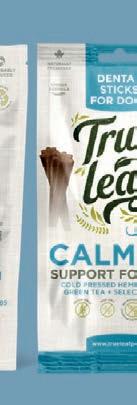







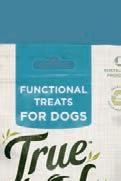
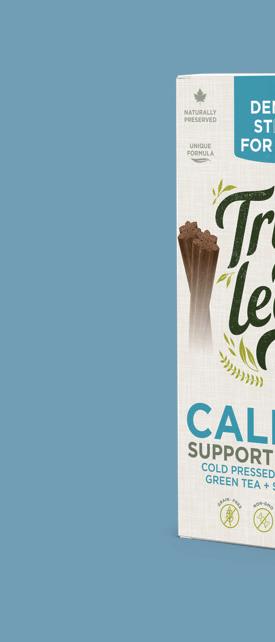







Natures Menu, a leading natural and raw food manufacturer, has launched a highly requested extension to its Real Meaty Treats range with a new bigger pack.















































Perfect for multi dog households, larger furry friends, or pet owners looking to save by buying in bulk, this larger version of the already popular 60g Real Meaty Treats pouch has come to fruition after strong customer feedback.

The Real Meaty Treats range consists of classic best-selling meats including Chicken, Beef and Lamb & Chicken. Each product is made with 95% meat and contains no grain or artificial colours or flavours, making them the perfect tasty treat for activities like obedience training. Retailing at £3.99, the new 120g pack will also allow pet owners to benefit from a 10% saving over the existing 60g pack. The treats are super convenient to take out on a walk as they require no special storage. Coming in a handy resealable pack to maintain freshness, these treats can be easily transported from place to place. The treats can be easily broken into smaller pieces for training purposes both in the house or on the go.


To access the Natures Menu trade portal, visit: https://trade.naturesmenu.co.uk/login











Packed full of essentials to help transition puppies into their new home, the Dorwest Herbs Puppy Pack is designed with the all-important settling-in period in mind. Designed to be as gentle as possible on the inside and out, the pack contains:
● Soothe & Calm shampoo — specially formulated for sensitive puppy skin.

With all-natural ingredients, Soothe & Calm Shampoo combines the soothing and hydrating powers of oatmeal, aloe vera, and chamomile extract with the calming properties of lavender. Also, pH neutral with no artificial fragrances or SLS, this hypoallergenic shampoo can help keep skin and coat in top condition.
● Keeper’s Mix Sensitive — gentler version of a Dorwest best-seller promoting all-round health.
Developed to provide whole-body benefits with its blend of seven herbs including chamomile, Keeper’s Mix Sensitive is an even gentler flavoured version of best-selling original Keeper’s Mix supplement. Perfectly balanced to provide natural antioxidants (to neutralise free radicals), vitamins, minerals, chlorophyll, fibres, and complex bioactive compounds, while being especially gentle on the gut and other organs.


● Tree Barks Powder — designed to settle upset tummies and support digestion.

With upset tummies known to be common in puppies, Dorwest’s Tree Barks Powder contains three herbs renowned for their digestive health properties. Slippery elm bark, marshmallow root, and white poplar bark work together to soothe the gut, promoting comfortable tummies, good regularity and normal stools.
● Easy Green Power — all the power of super-greens in an easy-to-give powder.

Dorwest’s Easy Green Powder is easily added to puppy’s food. The rapid air-drying process retains maximum nutrients in a digestible form to naturally boost levels of iron, vitamin C, chlorophyll, calcium, magnesium and antioxidants (to neutralise free radicals).
● Dorwest spoon & ball — handy for powder administration and fetch!
To ensure supplement measurements are correct, the pack comes with an exclusive Dorwest spoon, with Dorwest tennis ball also included for fun games of fetch and to help with bonding.

Visit www.dorwest.com for more information, call 01308 897272 or for trade enquiries email trade@dorwest.com
The Hurtta Weekend
reflects a
body

the

Perfect for the darker morning and evening walks this winter is the Hurtta Weekend Warrior Neon Harness, boasting a large reflective surface area to ensure high visibility.
The Hurtta Mudventure Overall ECO is waterproof and dirt-resistant, with lots of details such as the rain-stopper inner collar that will keep dogs dry and mud-free in any weather. The Mudventure Overall covers approximately 90% of the dog and has multiple reflectors. Another great coat in the collection is the Midlayer Overall. This coat will keep dogs warm and protected against cooler temperatures. Made of lightweight, functional jersey-jacquard fleece mix, this midseason and winter staple is soft, flexible, and comfortable.
The range of leashes in the Autumn/Winter Collection is made with 100% recycled polyester. They are adjustable with a comfortable padded grip and a convenient secret pocket for storing dog poop bags. A woven, high visibility strip runs the entire length, and it has a controlled loop near the carabiner that allows for freedom and ensures safety and control. There is also a clever, multifunctional, adjustable-length leash that offers a variety of uses, including stepless length adjustment 100-300cm, waist or shoulder jogging, leashing two dogs at the same time and includes a front ring attachment for no-pull harnesses.
Contact your Pedigree Wholesale representative or visit www.petproducts.co.uk
Natural Cornish Pet has added to its range of natural conditioning products by introducing a new Flaxseed Oil to support a pet’s health particularly through the winter months.
This new product, which is suitable for both cats and dogs, is made from 100% fresh, ethically and sustainably sourced quality British Flaxseed which is packed with Omega 3, 6, and 9 to deliver a wide range of health benefits including:
● Strengthening the immune system ● Improving joint mobility and arthritis ● Calming dry itchy skin ● Supporting cardiovascular health ● Aiding cognitive function, vision and hearing
This is a supplement for pets of any age, to be served with the main meal of the day. Older dogs in particular will benefit from anti-inflammatory properties that should help aid in the reduction of any pains from the onset of arthritis. Younger dogs, on the other hand, generally see improved cognitive function and improved bone density. All great news to keep any four-legged friend healthy. Use as part of a balanced diet to support the health and well-being of cats and dogs.
For more information, visit www.naturalcornishpet.co.uk or for Trade enquiries visit https://naturalpetwholesale.co.uk








Manchester-based luxury pet lifestyle brand Scruffs® have continued their category expansion with the new launch of pet storage solutions.

The Scruffs® Cantina range is a coated steel storage, designed with pets and owners in mind. The storage canisters are made from coated steel, so are sturdy and can be recycled. Unlike many plastic containers, they are BPA free, so don’t contaminate food with chemicals which are harmful to pets. They have a contemporary look so they can sit alongside other kitchen top items without looking out of place, and are available in three colours and four sizes for treats and dry food. Selected sizes also feature a handy scoop for mess-free serving.









Scruffs® is also set to launch new pet placemats which are designed to complement their feeding and drinking bowls. Placemats are available in different materials to suit different consumers and price points. Scruffs® will launch placemats in the following materials: PPE/EVA Foam, Cork, and Debossed Faux Leather.





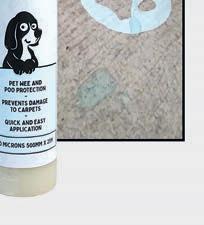

Scruffs® PPE/EVA Foam Placemats are designed to be the value range, they are made of PPE with an EVA foam base, which provides non-slip properties.
Scruffs® Cork Placemats are available in two shapes and sizes. Sets of two round cork placemats are made from 100% cork with printed designs. The wave design depicts water and can be used for water bowls, whilst other designs can be used for food bowls. All provide non-slip properties on the base and top surfaces. All are wipe-clean and feature neutral designs to appeal to all pet owners.
Scruffs® Faux Leather Placemats offer an air of grandeur and decadence to pet feeding. Available in two colours, the 40 x 30cm placemats feature a subtle debossed paw print pattern, bringing a touch of class to meal times.


For more information, including sample requests, please email pr@petslovescruffs.com. For stocking enquiries, including availability dates, please email sales@petslovescruffs.com





Lancashire-based pet accessory start-up company Accidents Happen launched a new carpet protector at PATS Telford which caught the interest of visitors to their stand including one of the major pet wholesale companies.
The product was the inspiration of John Blezard who is a project manager in the banking industry and painting contractor Chris Clayton. John had just bought his first home and had spent a fortune on new furniture and carpets for it. At the same time, he had bought an energetic Cocker Spaniel puppy called Johnson. Despite all efforts to train him with puppy pads, Johnson often ignored them leaving lots of wet patches and little presents hidden for John to find. Johnson is immortalised as the cartoon dog in the company logo.
With Johnson consistently weeing on the new carpet, John decided to use a carpet protection film from a major DIY brand but he was not happy with how it made his home look. Chris and John then realised that there was a niche in the market for a puppy carpet protector film that was more pet focussed. The pair found a manufacturer and with the help of a local designer, came up with a paw print film that was easy to lay and would protect a carpet from little accidents. The company started trading in December 2021 and within a short space of time received rave reviews.




Chris said: “We are now embarking on a PR campaign to increase awareness and we want to focus more on the trade. We are the only pet focussed carpet protector film on the market and the beauty of it is that you can protect your whole carpet and not just a small patch. We are also more environmentally friendly than having to throw away and replace a whole carpet which is both expensive and disruptive.”


ay and would protec t hin ng y pet he you not re ng to arpet ptive.”
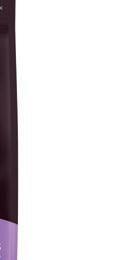

Discover the NEW! CORE Reward+ Treats range of soft treats, each with a unique delicious taste and specific health benefit.
Wellness CORE make sure that their products fuel dogs for a lifetime of well-being. That is exactly the reason why the new CORE Reward+ Treats range has been perfectly crafted and are packed full of high-quality proteins, nutrients and superfoods. The new CORE Reward+ Treats range offers consumers a guilt-free solution when treating their dog, knowing they are contributing to their dog’s overall health and wellbeing:
● A salmon-based recipe fuelled with ingredients beneficial to skin and coat, such as omega 3 & 6 from salmon oil


● A krill-based recipe with prebiotics, Aniseeds, and Fenugreek to support healthy digestion
● A duck-based recipe with passionflower and camomile to help in reducing stress and promote calm behaviour
● A turkey-based recipe with glucosamine and chondroitin sulphate supporting optimal hip and joint health
FREE FSDU’s are available. The FSDU holds all varieties of treats and will make an impact in your store! Images and content for website and social media are also available for stockists to utilise.
To become a stockist, please call Kennelpak on 0115 939 9077 or email info@kennelpak.co.uk @kennelpak.co.uk
If you are interested in becoming a stockist or to find out more visit: www.accidents-happen.co.uk
g a stockist or to find

The perfect Indoor Dog toy, the brand-new Chuckit! Indoor Slider is now available at Pedigree Wholesale. Perfect for keeping dogs occupied in the comfort of their own homes, the Indoor Slider is made to glide along floors, engaging a dog’s natural chase instinct. Designed to be a challenge to catch, this toy is made for self-play, allowing dogs to fetch with themselves.
Active play is important to every dog’s day and the Chuckit! Indoor Slider is the perfect way to provide active play indoors. As the dog pounces on the Indoor Slider, the extra-large air chamber provides an exceptional squeaking sound keeping dogs engaged in play. The durable rubber dome means this toy will last for extended playtime!

Chuckit! toys have been developed to create more ways to play and playtime doesn’t have to just be outside! The Chuckit! Indoor Slider is exclusively available to the specialist pet trade via Pedigree Wholesale.
For trade enquiries, contact your Pedigree Wholesale representative or email sales@petproducts.co.uk
WHIMZEES® by Wellness antlers are the new and exciting long-lasting treat for dogs. Made with limited, all-natural ingredients, these rawhide-free treats contain an added infusion of camomile to give dogs a treat that takes time to chew, but one that tastes great too. With a unique antler-shaped design, these chews are crafted to be slightly more difficult to hold and chew making it harder for them to sink their teeth into first go. Delivering this unique and healthy chewing challenge, WHIMZEES® by Wellness antlers will keep dogs occupied for long periods of time and can also help keep dogs mentally engaged, promoting calm behaviour and mental enrichment that helps keep them happy.






Best of all, while they are chewing for their mental enrichment, the benefits don’t stop there. With every bite dogs will also be doing a great job cleaning their teeth. Each WHIMZEES® by Wellness treat helps reduce plaque and tartar, promotes gum health, and freshens doggie breath.
WHIMZEES® won the 2022 Pet Product Marketing Must Stock Product of the Year Award, as voted for by Pet Industry Retailers, and has been voted Pet Oral Healthcare Product of the Year 2022 by consumers in the Healthy Pet Guide. The WHIMZEES® range caters for adult dogs and puppies too from the age of just three months.



The full WHIMZEES® range is available direct from Kennelpak or from most Wholesalers.
WHIMZEES® instore POS is available for all independent retailers from shelf wobblers and shelf strips to floor vinyl stickers and full size Free Standing Display Units.
For more information call 0115 939 9077, email info@kennelpak. co.uk or contact your main Wholesaler
Well-established within the equestrian market, British supplement company BETTALIFE® are delighted to expand their canine range of support, introducing PharmaTRAC Total Digestive Support for Canines to the range, joining their existing canine joint supplement, PharmaQuin Joint Complete HA for Canines.


Based on the success of the equine digestive support formula, new PharmaTRAC Total Digestive Support for Canines targets the dog’s entire gastrointestinal tract, helping to maintain an optimal gastric environment, support normal fermentation patterns, and contribute towards calm behaviour.
PharmaTRAC contains an optimum blend of ingredients shown to maximise dog’s digestive comfort and support the formulation of normal faeces. The inclusion of the prebiotic Inulin helps to restore natural balance in the gut and promote healthy bacteria. Like all BETTALIFE® products, there are no fillers or bulking agents included in the formula and all ingredients are clearly listed on both the tub, website, and product brochure for complete piece of mind.
Suitable for dogs of all ages, breeds, and activity levels, PharmaTRAC Canine is ideal for maintaining optimal digestive conditions during stressful events or changes in diet, and in trials was seen as particularly beneficial following periods of soft or loose stalls or digestive upset and sensitivity.
The 300g tub provides 100 days of digestive support. All BETTALIFE® products are available in a recyclable tub, excluding the labels which are unfortunately not yet recyclable.
For further information about the product visit www.bettalife.co.uk or email kaylee@bettalife.co.uk

Made with a smooth polyester-silk lining to help protect curls while reducing matts and tangles, Mikki’s new Doodles Coat range is designed to keep dogs warm, dry, and tangle-free during the winter months.
Available in several sizes, the new coats are water and windproof, with fully adjustable fittings at the neck, body, and legs. Their silky lining works by reducing friction between the dog’s hair and the coat and, unlike other materials, absorbs very little moisture from the fur thus keeping it frizz-free.
Designed to be roomy enough to accommodate the curly coats of Poodle crossbreeds, the range is suitable for any coat type, and features full neck and leg covers, reflective safety strips, and a lead attachment point.
The range is available to order now with an optional FSDU from https://trade.interpet.co.uk/
Chicken is the latest addition to the Karnlea Bone Broth range and it’s all set to be a ‘winner, winner’.
Chicken broth is known the world over as the perfect comfort food — a light and lean protein source that is as good as its tastes. Now, cats and dogs can get some of that ‘soul food.’


Ideally timed to become a seasonal favourite, Karnlea Bone Broth can be served in a variety of ways: straight from the carton as a liquid, chilled, frozen, or gently warmed to keep out those winter chills.
Chicken has many benefits: it is a great source of amino acids, helping to build muscle mass, while high levels of Omega 6 provide essential fatty acids to sustain healthy skin and shiny coats. Chicken bone broth also boasts high levels of collagen which support joint health. Highly palatable and easy to digest, Karnlea’s chicken flavour bone broth is ideal for pets who are fussy eaters or suffer from delicate tummies.
Like Karnlea’s beef and lamb varieties, its new chicken flavour is slow-cooked using only natural ingredients: free range chicken bones reared on cooperative farms, filtered water and a touch of apple cider vinegar to extract protein, collagen and minerals from the cooking process.


It is packed in heat-sealed cartons which maintain its freshness without the need of additives or preservatives. It can be used as a supplement, topper, or treat. Each unit contains 500ml of bone broth which has a recommended retail price of £10.99.
For more information visit: www.karnlea.com/trade



ORIJEN Petfoods have added two brand new products to its award-winning cat food range: Guardian 8 and Kitten.
Both products are packed with high-quality ingredients that help support the health and development of a cat — from its infancy as a kitten and over the span of their lives. The first five ingredients of both ORIJEN Guardian 8 and Kitten, like the rest of the ORIJEN line-up, are always fresh or raw, proving to be beneficial of the cat.
● Specifically formulated for kittens.
● Packed with 90% quality animal ingredients including chicken, salmon, and turkey, this diet ensures muscle development is maintained throughout a kitten’s early years.
● Brain development and cognitive function is also supported in kittens thanks to the careful combination of WholePrey ingredients.
● Specially designed smaller kibble size that supports the digestive system along with the infusion of natural prebiotics, such as dried chicory root and fibre from a variety of fruits and vegetables.
Guardian 8
● Guardian 8 is specially designed using ingredients from a variety of raw animal ingredients to support adult cats by delivering 8 valuable health benefits.
● Wild caught fish and prebiotics from dried chicory root support immune and digestive systems, while Omega 3 rich oils from wild caught pollock help maintain a healthy coat and skin, as well as joint health.
● Helps to maintain muscle, eye, and heart health, as well as aiding brain function.
● Abundance of fresh and raw ingredients reduces the need for supplementation.
For more information, visit www.orijenpetfoods.co.uk or for trade enquiries, email sales@bernpetfoods.co.uk
Yorkshire-based pet brand Harringtons has launched the latest edition to the Just 6 range, featuring a variety of wet food options, as well as an upgraded dry dog food range.

Part of the Inspired Pet Nutrition family, Harringtons prides itself on great nutrition, with the new and improved Just 6 dry recipes containing over 50% meat and fish. The enhanced range can be purchased in both 2kg, 6kg, and 12kg packs to suit varying customer needs, with the 2kg packs using resealable bags to ensure longlasting freshness while maintaining all the delicious flavours.

Harringtons Just 6 also adds wet dog food to its delicious product range, with each individual pack containing 70% freshly prepared meat or fish. The range is available in three exciting flavours; chicken, salmon, and lamb, with customers having the options of both 380g trays and a multipack of 16.
Staying true to the product name, there are ‘Just 6’ familiar ingredients in each carefully developed recipe, leaving owners more relaxed and reassured that these tasty recipes give all the natural goodness your dog needs and more. Nothing that it doesn’t.
By focusing on a combination of simple ingredients, carbohydrates, minerals and absolutely no grain, Harringtons Just 6 not only tastes great, but naturally promotes better gut-health and helps sensitive digestion, allowing you to feel confident knowing your dogs’ needs are being met.
To find out more about Harringtons’ Just 6 range, visit www.harringtonspetfood.com/pages/just-6 The range is available from certain wholesalers.
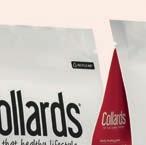


Kennelpak is pleased to announce the extension of Collards popular Grain Free range of food.




Collards Grain Free with Chicken & Potato, as a dry food, is now available for all life stages: Puppy, Adult, Older, and Overweight in both 2kg and 10kg packs.


The Mr Bug gift box, a heart-thumping, letterbox sized, box of tail-wagging, nutritious joy. Mr Bug accommodates every imaginable canine taste leanings, mixing Devon-born mealworm powder with everything from beetroot, sweet potato, parsnips, and vegan cheese to honey and peanut butter. Whatever your dog’s bug-munching preferences, this shows off Devon bug cuisine off at its light-to-crunch biscuity best!

Insect treats have traditionally been made from bitter-tasting black fly larvae that were originally created for cattle feed. Besides being more bitter than a small bag of angry limes, recent research has shown that black fly larvae is disappointingly high in saturated fats!
Mr Bug is a big believer in the circular economy and the fact that insects are a truly sustainable protein source needing only a fraction of the water, land, and time of traditional farmyard fayre. Epicurean-orientated mealworms with their distinctive nutty twang are rammed with nutritional worth, offering more calcium than milk, more B12 than salmon, and more iron than spinach by offering all 9 amino acids.
Mr Bug comes as Veggie One, A Fruity One, A Nutty One and The Cheesy One varieties, providing crumbly dog biscuity joy.
For more information, visit Mrbug.co.uk or for trade enquiries, email conal@mrbug.co.uk








Paleo Ridge, a leading producer of high-quality raw dog food, has launched a brand-new range: Paleo Ridge Essentials.
Specially formulated to provide dogs with all the benefits of raw feeding while offering the best possible value to owners, Paleo Ridge Essentials is improving customer access to raw feeding, encouraging pet owners to make the switch.
The new Essentials range joins the existing Paleo Ridge ranges, Paleo Plus and Classic. The product composition and packaging for the Essentials range have been adapted to make the products easier to manufacture, enabling a more accessible price point. Sourced predominantly in the UK, the Essentials range is hypoallergenic and high in protein, delivered to Paleo Ridge’s exacting welfare and ethical sourcing standards.
Paleo Ridge is celebrating the launch of the new range with a special introductory Black Friday offer for trade customers. The offer, which provides a 20% discount to end-customers, is available throughout November and will accelerate the distribution of the new range, as well as encouraging customers to shop at their local pet store. The range is well-positioned to drive trial among consumers who recognise the benefits of switching to raw, providing the reassurance of a high quality, ethical brand.
Each Essentials meal contains 20% seasonal vegetables and 80% high-welfare meat, bone, and offal. In keeping with all Paleo Ridge ranges, Essentials products are minced to a chunky consistency and suitable for all life stages including puppies and seniors.
The Paleo Ridge Essentials range stays true to the values of ethical sourcing and sustainability at the heart of the Paleo Ridge offering. In August, Paleo Ridge was RawSAFE certified, becoming a founding accreditee of the new audit designed to ensure the highest standards in the raw feeding industry.
This takes the total Collards Grain Free range to 11 products across both dry and wet food. Every recipe is expertly crafted to provide dogs with a nutritionally balanced diet. Collards products are already made using hypoallergenic principles, excluding ingredients that may be associated with food allergies and intolerances. Grain free takes this to another level by further limiting the chance of dietary reactions. What’s in the bag?
For more information visit https://paleoridge.co.uk or for trade enquiries, visit https://paleoridge. co.uk/stock-paleo-ridge
● Single meat source, with up to 48% chicken ● Potato and whole peas to provide highly digestible carbohydrates ● Natural antioxidants to boost the immune system
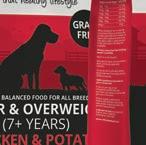
● Daily vitality supported by superfoods such as blueberries, spinach, and seaweed ● Omega fatty acids for healthy skin, coat, and immune system
● A balance of fermentable and non-fermentable fibres for healthy digestion and firm stools
● Functional and special ingredients, including prebiotics, yucca extract, herbs & botanicals, glucosamine & chondroitin Robert Constance, Head of Own Brand at Kennelpak, said: “In line with key market trends, an increasing number of pet owners are choosing to provide their pets with human-like foods or are being advised to introduce specialised diets for the wellbeing of their pets. By extending the Collards Grain Free range to include dry food, consumers can now provide their pets with exceptional quality nutrition for their dogs that also offers great value, which we all know is important in the current economic climate. We fully expect the new Collards dry recipe to become the top selling SKU within our key stockists before the end of the year.”
Kennelpak are committed to supporting the specialist, independent pet food trade. The full Collards Grain Free range is available either direct from Kennelpak or via selected wholesalers. The range offers an opportunity to make a great margin while offering customers a quality product. There is support available for stockist in the form of product training and point of sale assets.
For more information, please contact karen.hubbard@kennelpak.co.uk
Hagen has been a family owned, family run company ever since it was founded in 1955 and those family values run through everything we do. These values include a commitment to our customers, their pets, and the planet they inhabit and in recent years we have taken an increasingly environmentally focussed stance in our product development, production processes, and business practices.

ingredient in Bug Bites is Black Soldier Fly larvae which is widely considered as an ‘insect super food’ – a nutrient-rich protein source. Insects are part of a fish’s natural diet and are a great source of Omega 3 and 6, are high in protein, host an excellent amino acid profile, and they taste great too! Insect protein is becoming increasingly popular around the world, not just in animal feed but for humans too. The term ‘insect protein powder’ has seen a 49% increase in Google searches since 2014!
Leadership comes from the top and when our new Canadian headquarters building was constructed in 2006, it made a strong statement through our company around the ways we should be viewing our environmental footprint. The three-story building, nestled within a large wooded area just outside Montreal, is one of the few constructions to gain LEED (Leadership in Energy and Environmental Design) Gold status.

LEED sets the standards for green buildings, based on a rating system for the design, construction, and operation of high performance eco-friendly structures.
Many components of the building are made of recycled steel and concrete materials and lumber is certified from replanted forests. After the project was completed, we planted 8,000 trees in the surrounding lot to replenish the forest, as well as create a friendlier environment for native species. The building features a geothermal heating and cooling system controlled by naturally heated and cooled water stored underground. Radiant floor pipes and zone monitors run the ventilation system. An air-to-air heat exchanger creates fresh, clean air, and insulation is above standard building code and designed for a long lifespan. Our amazing HQ consumes 65% less energy and 35% less water than a standard building of similar size and has set the tone for the company’s direction ever since.
Black Soldier Flies only have an average of a 99-day lifespan and their only task is to reproduce. Fluval’s state-ofthe-art facilities allows these creatures to conduct this goal in a safe, clean, and protected environment, ensuring the quality and health of their larvae is as great as possible. Black Soldier Fly larvae (BSFL) do not carry diseases, making them a very clean and safe source of protein.
The larvae are grown under controlled conditions and are raised on unconsumed, human-grade fruits and vegetables recovered from the human food chain. These fruits and vegetables would otherwise be left to decompose in landfill sites, releasing methane into the atmosphere and contributing to global warming. It is recognised that around 6% — 8% of all human-caused greenhouse gas emissions are as a direct result of wasted food. Fluval plays its part in a greener future by collecting fruit and vegetables before they end up in landfill, using them to create a high-quality fish food instead. The larvae consume the fruit and vegetables, converting the nutrients into protein and good fats. After a 14-day feeding cycle, the larvae are harvested and dried into a highly nutritious flour, ready for Bug Bites production.
The use of insect protein for both pet and human foods and supplements is set to explode in the coming years. A ‘Markets & Markets’ 2019 report predicted the value of the insect protein market would rocket to over $4.5bn by 2027, with celebrity endorsers such as ‘Iron Man’ actor Robert Downey Jr. backing investment into insect protein firms.
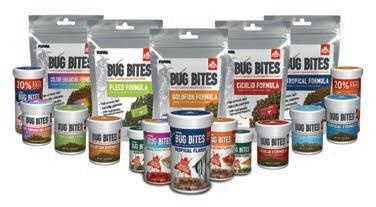
wood litter is made from FSC-certified leftover lumber from sustainably managed forests. By recycling raw materials, we help save thousands of trees, as well as producing a biodegradable, compostable, safe, and very effective product. Additionally, our litter production is extremely energy-efficient and the factory is completely solar-powered.
Our incredibly popular Go Natural Pea Husk litter is another clumping litter, manufactured from pea husks leftover from the food production industry which would otherwise get discarded. This tightly clumping litter is not only beneficial to the environment, it’s also fully biodegradable, dust free, and compostable. Watch for our new expanded range of Go Natural wood litters coming soon, supplied boxed for more efficient transport and with eco-friendly touches such as cotton handles, rather than plastic.
Over the last few years, Hagen has introduced an array of
A key innovation was the launch of Fluval Bug Bites fish food, the first aquatic food on the market that’s number one ingredient by weight is Black Soldier Fly Larvae (BSFL), a source of insect protein. More recently, mealworm has been used in Hagen’s Laguna branded pond fish food range. Labelled as ‘the aquatic food of the future’, Fluval Bug Bites first splashed into the fish food market in 2017 with a selection of pellets and granules in species-specific formulas, all of which were received positively by consumers and, perhaps more importantly, the fish that ate them! In 2019, due to popular demand, Fluval released Bug Bites in a flake format, available in a variety of formulations for health, colour, and vitality.
Sustainability is at the heart of Fluval Bug Bites and the innovative, eco-friendly production process that sets this high-quality fish food apart from the rest. The number one
In 2020, our Catit brand launched Catit Nuna, a cat food with BSFL as its main protein source. Not only does this superfood ingredient have much higher levels of protein, iron, and calcium versus the equivalent weight of chicken or beef, the larvae also require much lower levels of water and land to produce, as well as producing far less carbon. In fact, one 5kg bag of Catit Nuna saves up to 35 bathtubs of water and 98kg of CO2 than meat-based foods. The major hurdle to overcome in the market is consumer acceptance, but once insect protein is seen as a mainstream ingredient, it could revolutionise the environmental impact of animal farming.

The most widely used material for cat litter is sodium bentonite, a form of clay. It’s a very effective and cheap way of producing clumping litter but can have devastating effects on the environment. The strip-mining process used to mine bentonite clay results in the obliteration of the local habitat and can bring various toxic minerals and gasses to the surface, polluting the atmosphere and waterways. In addition, this material does not biodegrade so the litter which is used and disposed of makes its way back to landfill where it will remain indefinitely. Finally, the clay can get stuck to cats’ claws and may be ingested, which can cause gastrointestinal problems. Bentonite clay is bad for the habitat, the environment and for cats as well!
For this reason, Hagen have launched two ranges of cat litter in recent years, under the ‘Catit Go Natural’ brand. Awarded Your Cat’s ‘Best Cat Litter’ award in 2022, Go Natural clumping
At Hagen, we understand that plastic has its place in our society and in some applications is simply the best and, in some cases, only material for the job. For an aquarium filter or a cat litter tray, plastic is currently the best and most viable solution. These items last for years and the ecological damage compared to a disposable solution (such as cardboard litter trays) over the product’s lifetime are minimal. In many cases, a disposable solution will cause more environmental harm in the long term.
The focus we must have as a company is in reducing the consumption of single use plastics for packaging and introducing more sustainable consumable products such as food and litter. We have taken great strides forward in this area in recent years and will be ensuring eco-friendly credentials are a priority with our new product development and production processes in the future.
A May 2022 Neilson report identified three key consumer trends regarding eco-friendly pet ownership. These were:
● ‘Clean and natural’ attributes are prime motivations for pet owners, who increasingly regard their pets in humanised ● ways.
● Both search and sales trends in pet food indicate increased importance across key attributes such as human-grade, clean label (i.e. free from…), alternative proteins, ancient grains, and food as medicine.
● Sustainability is a strong motivation for many pet owners.
It is clear that the strong consumer trend towards ecofriendly products and practices is as strong in the pet trade as anywhere else and it is vital that manufacturers respond with responsible sourcing, innovative new product development, and, above all, transparency in their ingredients and practices. This planet belongs to our pets as much as it does to us and it is the responsibility of every manufacturer to step up to the plate and make eco-friendly a watchword for everything they do.
How important is it for pet trade businesses to be eco-friendly?
Why is promoting being eco-friendly a key value for the Hagen brands?
Tell us about the ways in which Hagen looks to be eco friendly?
Gives us an insight into some of Hagen’s eco-friendly products and what it is that makes them so green.
innovative products with a strong eco-friendly pedigree:
How important do you think eco-friendly credentials are to consumers? And in the pet trade in particular?
Being eco-aware and protecting the planet continues to grow in importance to the population. Green products and manufacturing processes are increasingly valued by the consumer. Here, we sat down with Paul Trott of Hagen to get an inside view of what goes into producing eco-friendly pet products and why it is so important.
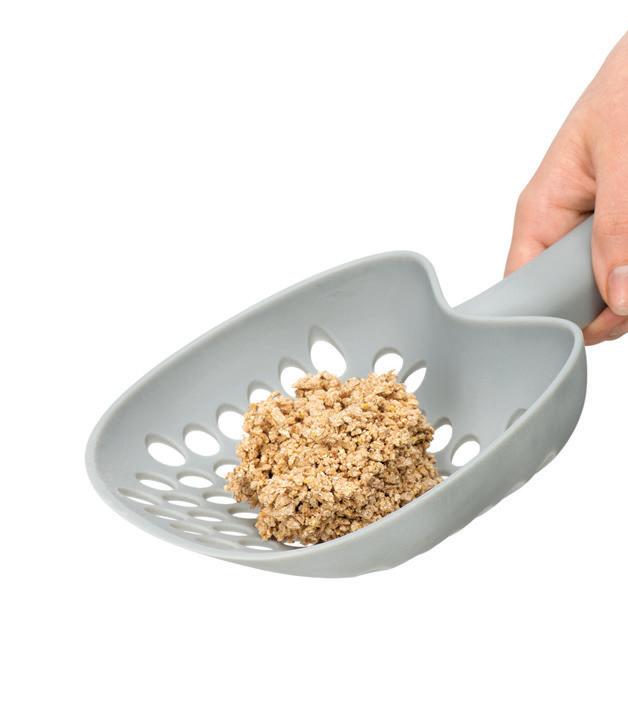


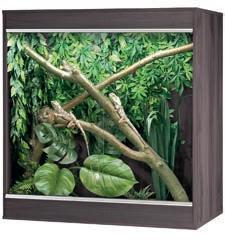




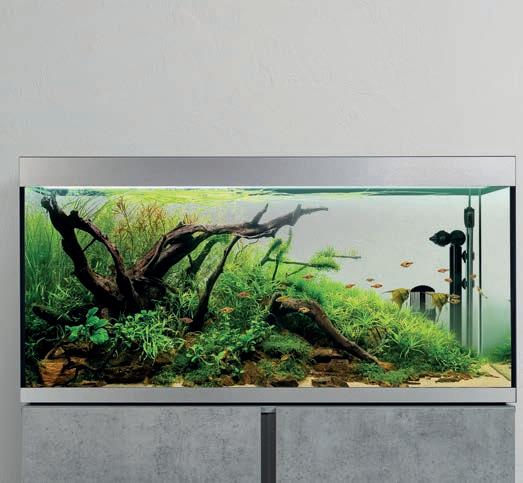









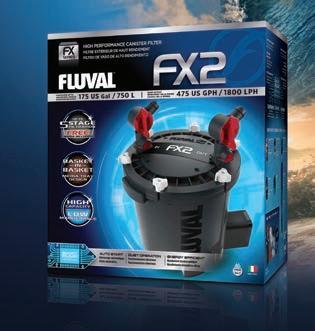





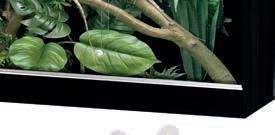


























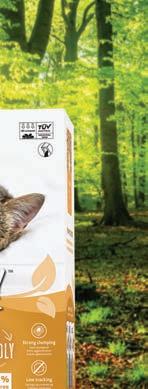



















































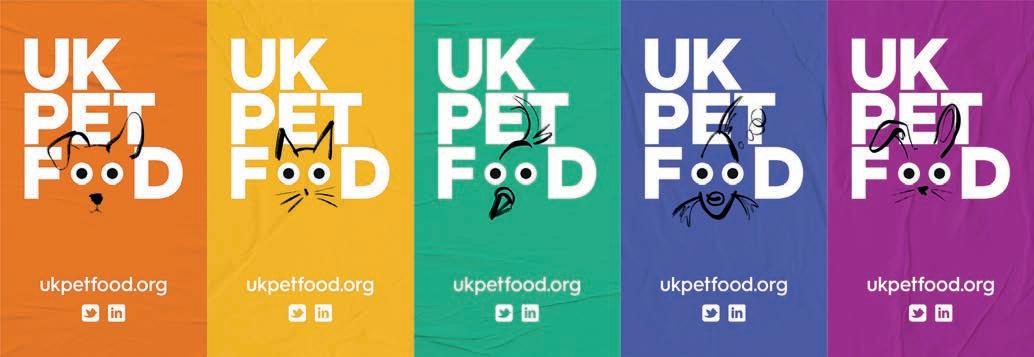
During Covid, we celebrated our 50th anniversary. There is much to be proud of. We’ve built a strong and proactive association. Your readers may know of us because we have always been the first point of call for experts with a nutrition enquiry. Our website contains over 30 factsheets, we have created interactive obesity tools, write highly regarded obesity reports, collect annual pet population data, welcome hundreds to nutrition courses on an annual basis — and so much more!
However, as the Association evolved, having widened our membership in recent years with suppliers and associate members — those who work closely with the pet food industry — we felt our brand could benefit from change too. We wanted an identity that was more inclusive, more dynamic, to better reflect who we are and what we are about.
Creating that immediate impact is important to us. It’ll help us cut through in a busy, noisy environment — particularly with policy makers. There has been a lot of political change and turmoil and making it clear immediately who we are is necessary.
The concept of future proofing was also key; we wanted to make sure we resonate with younger audiences too, future pet owners and future industry representatives. The move to UK Pet Food accompanied by the bold new look, which has personality, will help us achieve our goals.
nutrition, labelling, and the safe manufacture. This gives pet owners the extra assurance of the quality and standards our members operate to.
With the addition of associate members, we provide greater networking opportunities for the industry, and it also boosts our education and training offering. For instance, we have associate members in the areas of PR, packaging, retail, software, quality control analysis, sustainability to name but a few.
Alongside our new identity, we also renewed our three-year strategy which runs from 2023-2026. This has given us an additional clarity and focus during challenging times of Brexit, Covid, a war. and current challenges around the cost of living. This clarity of vision will keep us focused on supporting the industry, the wider network we engage with, and ultimately pets in the UK.
For those who haven’t heard of UK Pet Food before, can you explain the types of project you work on and where you have an impact?
Our work is focused around the areas mentioned earlier: safety and standards, nutrition, and sustainability.
In terms of safety and standards, our commercial raw producers have been working to raise the bar within their sector. Having developed sector guidelines working with DEFRA and the Food Standards Agency, we have recently established a certification scheme working with independent scheme providers, KIWA. This is another tool to support safety for pets and people through best practice raw pet food production.
based factsheets which discuss topics such as grain free diets, about the ingredients used in pet food, and dental health in cats and dogs. Please visit the Information Centre for our range of factsheets and if you think there’s a topic missing, please let us know! Visit www.ukpetfood.org.uk
We are in the process of target setting as we speak. Our targets will be around membership — member engagement and the growth of the UK Pet Food community. For example, we have pet retailers in our associate membership. In addition to the membership, proactive engagement with our external connections — policy makers and the pet care sector.
On sustainability, building a picture of our environmental impact to help inform how we continue to move forward in an environmentally friendly manner.
Our targets will be focused on ensuring we support dynamic and responsible UK pet food manufacturing, representing our members’ views and striving to raise standards.
“Over the past few years as Brexit loomed, UK
It is about ensuring an immediate connection and recognition of who we are. This will help across all the groups we work closely with – policy makers, the pet trade, the welfare sector, including vets and charities, and the media.
We also strive to continue to welcome more associate members. This is beneficial to the wider pet industry and ultimately our pets as we work to promote best practice across our core areas: animal welfare, safety and standards, sustainability, and nutrition. With our more inclusive identity, we can speak to a wider audience.
UK Pet Food works to advance pet health and well-being with quality nutrition from a sustainable, progressive pet food industry. We support dynamic and responsible UK pet food manufacturing, representing our members’ views and striving to raise standards.
The new identity gives us the opportunity to go out there and reconnect, communicate that we are a forward-thinking association, forge new relationships, and raise awareness of what our members stand for. Our members sign up to industry Codes of Practice which is best practice across areas such as
On nutrition, we recently hosted a parrot symposium –an educational event which delivered the latest knowledge on parrot nutrition and welfare. In addition to a series of presentations, participants had the opportunity to discuss future collaboration ideas and next steps for research. Our series of educational factsheets for the pet trade on topics, such as bird nutrition, vegan diets and insect protein continues to develop and grow.
Environmental sustainability is a significant area of activity for us. We focus on priority areas which include animal welfare, packaging, sustainability of ingredients, and the environmental impact of pet food production. We work hard to upskill our members and support their own sustainability journeys. We do this through sharing knowledge and best practice, building partnerships with organisations such as the WRAP UK Plastics Pact and the Pet Sustainability Coalition.

been a constant supply of information to make sure we kept abreast with all developments as they happened. I’m involved in the Communications and Veterinary Nutrition Committees as being actively involved gives me the opportunity to shape the direction of UK Pet Food and support the knowledge exchange which is vital for an industry body.”

Chloe Poolman, Pet Nutritionist at Premier Nutrition, said: “We have been a member of UK Pet Food for many years as it’s essential to us as a business. UK Pet Food has formed a solid base of expertise through the committees and working groups. The name change is a great move forward reflecting the whole range of members all of which are integral to the supply of safe and nutritious pet food.”
To support the community during their discussions with owners, we produce a range of nutrition themed factsheets, posters, and position papers. For instance, we have pet sizeo-meters, which are easy to use visual charts to help owners assess if their pet is a healthy shape. We also produce science-
Chris Broadbent, Director of Naturaw, said: “I am a member of UK Pet Food as it is important to have a voice, important to be seen as a credible business, important to meet others in the sector, and to always learn. The name change gives weight to the sector and is an opportunity for the sector to be seen and heard at an important time for the economy.”

The leading pet food trade association has a new identity to supercharge their ambition to have greater impact.
Tell us about the journey of the PFMA and how you’ve now arrived at the point of needing to evolve it into the new identity?
How does the title UK Pet Food better capture the remit and impact of the organisation?
Although a trade organisation, UK Pet Food offers information and support for pet owners and pet professionals. Tell us about this.
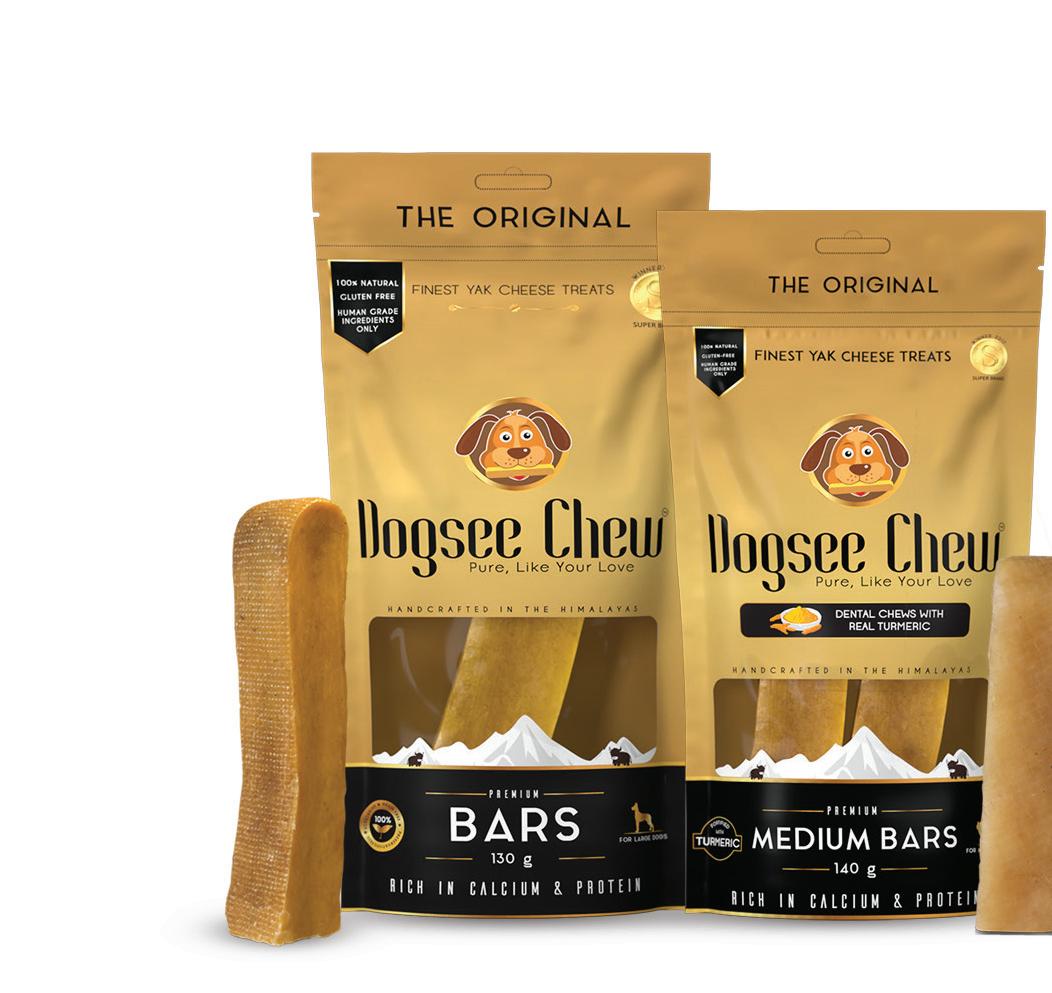








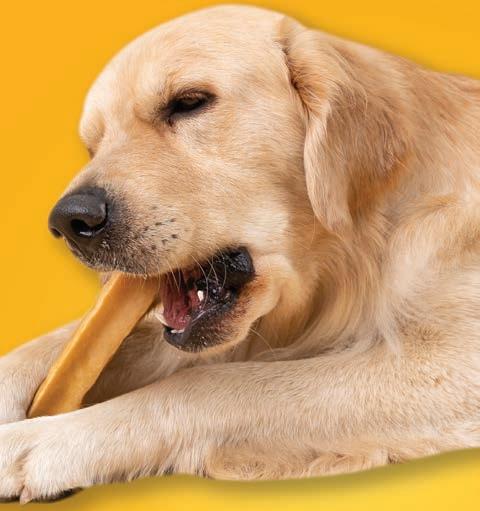



The countdown has begun, so follow Karen Bush’s advice on how to have a fun, happy, and safe Christmas for you, your family, and your dog.
You’re never too old for a game of hide-and-seek, and it’s one your dog can join in too. Give everyone a dog treat, send them off to hide, then accompany your dog, encouraging him to ‘find’ them and receive his yummy reward.
● That good old standby of a Kong tightly stuffed with delicious treats will keep your dog happily occupied when you’re busy. It can also help him settle and calm down if he’s getting a bit over-excited with all the Christmas activity.
● Walk off Christmas calories by taking your dog for an after-lunch walk; try a different route with new sights, sounds, and sniffs for him to enjoy.
● Get together with a group of dog-owning friends for a winter walk on Boxing Day, and make an occasion of it; ask everyone to bring refreshments to share at the end such as cake, sausage rolls, a thermos of hot chocolate with marshmallows to float on top, plus of course, treats for the dogs.
Some dogs love the buzz of Christmas, but it can make others grumpy. Stick to your dog’s usual routine as much as possible, and provide a space he can retreat to when he wants peace and quiet. A covered crate with cosy bedding and a favourite toy inside will be more of a haven than an open bed, and is less likely to be tripped

Eight out of 10 owners buy their pets a Christmas gift.


Forty per cent of owners plan to spend around £10 on their dog.


Setting up a plug-in pheromone diffuser before all the festivities begin may help your dog cope with any stress.
● By all means dress up
Provide a safe space for your dog to escape to if necessary.
yourself, but don’t insist on decking out your dog as an elf or him wearing a pair of antlers if he’s not enthusiastic about it.
If it’s your dog’s first Christmas he may be baffled by the appearance of a Christmas tree, and keen to investigate it more closely. This can be a good time to polish up his ‘leave it’ cue! Some people put a dog guard around their trees, but it may not stop a really curious pet, and the best policy is simply not to leave him unattended with it. If you want to place presents round the foot of the tree, it may be wise to wait until Christmas morning.
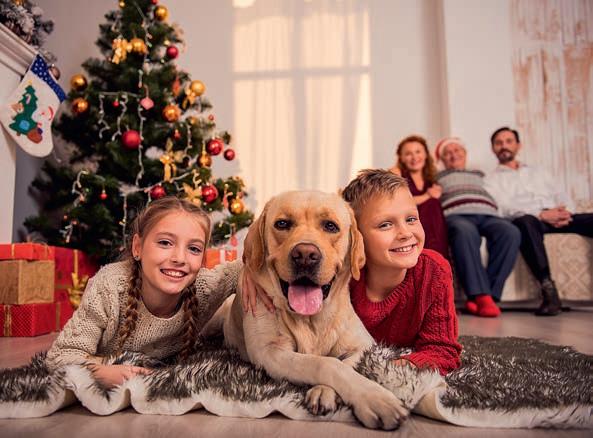



It’s not just festive food that can be harmful to your pet at Christmas; many plants given as gifts or used as decorations can be toxic, including poinsettia, mistletoe, holly, and ivy. Other seasonal ornaments such as salt dough novelties, lit candles, pot-pourri, tinsel, and fake snow may also be dangerous, so think carefully about where you place things, and keep a close eye on what your dog is getting up to.
Choose size-appropriate toys for your pet; some dogs are tougher on them than others, and some may need supervision. Research your choices online and read reviews to gain an idea of their suitability.
● If you have more than one dog, take extra care when giving them gifts or special treats; separate the dogs if you think there may be any bickering.
● Take lots of photos of all the fun and use them next year to create personalised festive cards and gifts such as mugs, jigsaw puzzles, and mouse mats for family and close friends.
A traditional part of Christmas are terrible cracker jokes such as: A ghostly dog floats into a pub late on Christmas Eve. “I’ve lost my tail,” he tells the landlord. “Any chance you could put it back on for me?” “Sorry,” says the landlord. “I’m not licensed to retail spirits at this time of night.”
● Remove the snaps from Christmas crackers if your dog is noise sensitive — or make your own silent ones.












If you want to give your dog a turkey dinner of his own as a special treat, a little white breast meat and a few plain, boiled veggies such as carrots, peas, sprouts, and broccoli will go down fine. Don’t, however, give leeks, or add any turkey skin, gravy, or roasted vegetables, which can be high in salt and fat, and definitely no stuffing, which may contain harmful onions. If in doubt or your dog has a sensitive tum, play safe and just give a small, token helping of his usual food. He’ll probably be just as happy!
…and off the menu!
Seasonal treats for humans could be a disaster for your dog:
● Fruit and nuts may be good for you but some, such as grapes and macadamia nuts, can be fatal for your pet.
● Most owners are aware of the dangers of chocolate and that hanging chocolate novelties on the tree, no matter how well wrapped, is not a good idea!
● Mince pies and Christmas pud are stuffed full of dried fruits that are toxic to dogs, such as currants, raisins, and sultanas. They are also high in fat, which may lead to pancreatitis.
● Don’t give left-over cooked meat bones, which are brittle, splinter easily, and could get stuck in, or perforate, the gut.
● The smell of all that delicious food can be tempting enough to overcome training. Make sure anything left to cool in the kitchen before storing is well out of reach — and never underestimate your dog’s resourcefulness!
● When disposing of left-over food, make sure your dog cannot access it. Many incidents involving poisoning are due to raiding the kitchen bin.
● Alcohol is also harmful to pets so take care not to leave drinks where your dog can reach them; many dogs seem particularly partial to whisky-based cream drinks.
Mistletoe is one of several festive plants that are toxic to dogs.
● Those pleading eyes can be so hard to resist, but could lead to your dog being given foods that aren’t good for him. Ask Christmas guests to only give him proper doggy treats from a dish clearly labelled to avoid confusion with human nibbles!

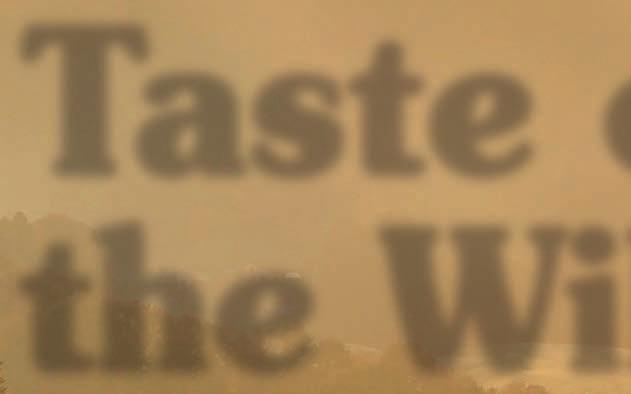



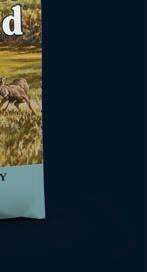























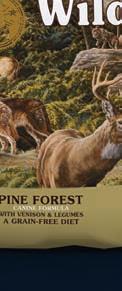






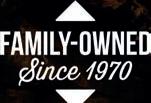
A look at the essentials your cat needs — and what you may not have considered when providing them.
Love is certainly important, but it isn’t all you need if your cat is to be a happy, healthy individual — other essentials are equally vital to his well-being. Neglect to provide these basics and he’ll be at risk of becoming unsettled, unhappy, and liable to develop behavioural and possibly health issues. Some of them may seem obvious, but might need a little tweaking to tailor them perfectly to the feline in your life. In no particular order:

Most cats prefer to adopt an avoid and evade strategy, rather than a confrontational one, when faced with anything perceived as threatening or unfamiliar.



Whether it’s strange odours, loud or worrying noises, unfamiliar objects, the presence of visitors, or other unknown or disliked animals, safe places give your cat a space to retreat to at any time of stress, enabling him to feel secure and protected, and that he still has some control over his environment. And for a cat, control is the most important thing in their life.
A safe place can be as simple as a cardboard box turned on its side for easy access, or a carrier with the door left open, but many like to have high places they can retire to when they feel the need to escape, or want a bit of privacy, so provide perches or shelves too, which you can either buy or fabricate yourself if you have good DIY skills.




Some form of identification is essential in case your cat strays (or is mistaken for one) to ensure you are reunited. The safest and most effective way of doing this is with a microchip which won’t come off or put your cat at risk of injury as a collar might do.
About the size of a grain of rice, the microchip is implanted under the skin between the shoulder blades; each one has a unique code stored on a national database. A scan of the microchip by an animal warden, vet, or rescue centre reveals your contact details, hastening the safe return of your kitty. Because it’s a permanent, tamper-proof form of ID which lasts a lifetime, it can also resolve ownership disputes — and that’s not all: hi-tech cat flaps and feeders can even be programmed to recognise an individual microchip.
Your vet or any qualified microchip implanter can carry out the procedure. Some vet practices and charities may have special offers or even free microchipping events on certain days, ask if such schemes are available. Don’t forget to notify the microchip database company if you change address or phone numbers.

Food and water bowls should be wide — cats hate their whiskers touching the sides.
Providing feeding, drinking, toileting, claw scratching, and resting places in multiple locations helps avoid stress and potential conflict if you have more than one cat — but is still important if you only have a single feline as it gives choice.
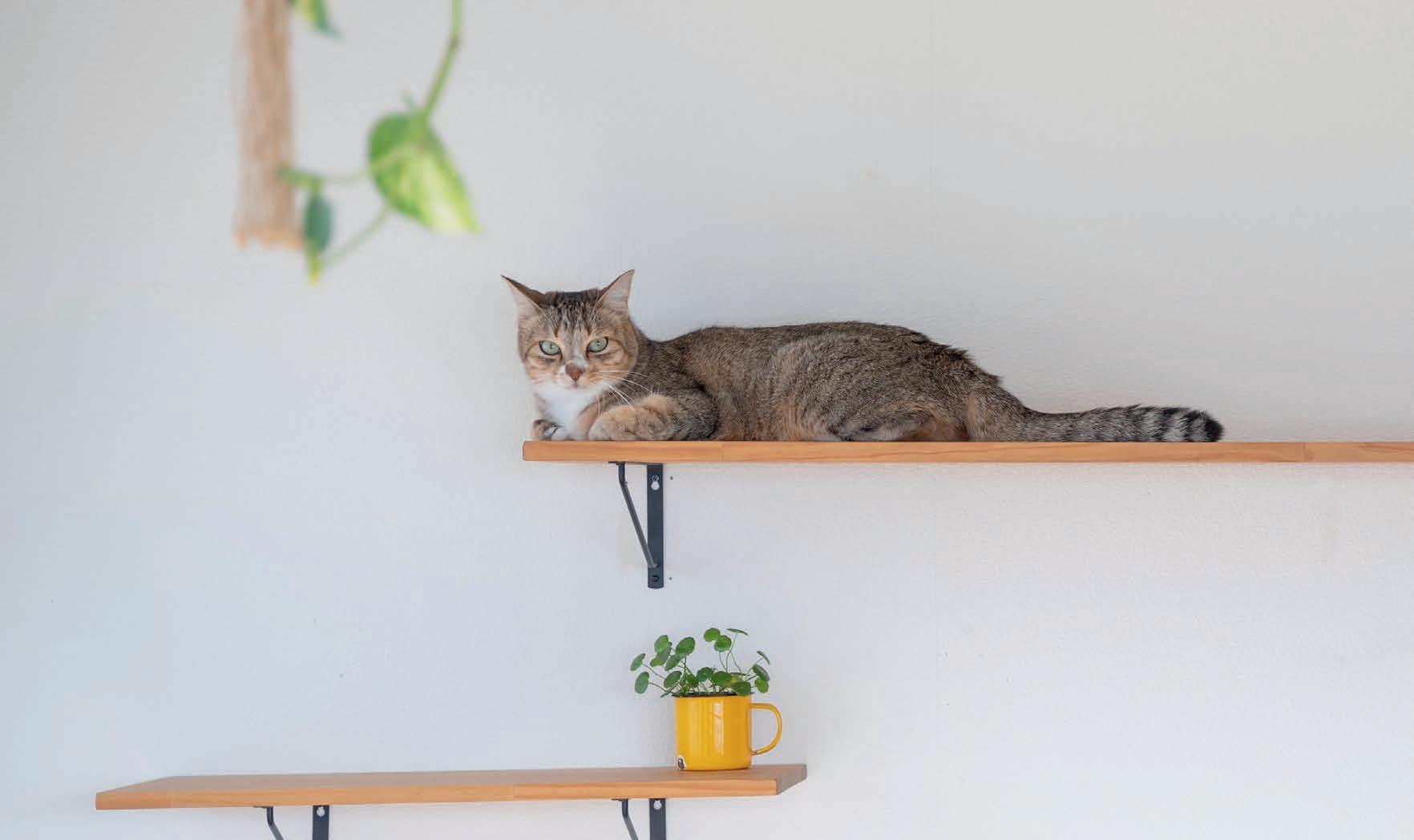
Make sure your cat is registered with a local vet’s. Ensuring you provide veterinary care if your cat becomes unwell is a no-brainer, but it can be easy to quickly run through savings you may have put aside for such an eventuality, so having a good pet insurance policy to fall back on is vital. Be prepared to do your research to find the right cover, at a price you can afford, from a company who will be there for you should the worst happen.

Don’t forget preventative healthcare as well, including vaccinations, worming, and flea and tick treatments. Discuss these with your vet to decide on the best options for your cat. Some veterinary practices offer discounted annual healthcare packages which you can either pay for in a lump sum or spread out payments over the year.

Always have fresh, clean water available. He may enjoy cow’s milk or cream, but it’s likely to upset his tummy. Although specialist cat and kitten milk is available with a reduced lactose content, view it as an occasional food treat, not a replacement for water.
You may need to experiment to find your cat’s preferences. If he’s not keen on chemically treated tap water, try bottled water or rain water collected from containers in your garden. Cats may also be put off by lingering taste or odours from detergents used to clean bowls, so rinse very thoroughly after washing.

How you present the water is as important as the quality! Most cats prefer shallow glass or ceramic bowls filled to the brim so they don’t need to put their heads right in. Not all cats will be satisfied with a simple bowl though; some love to drink from moving water. A water fountain with an adjustable flow and replaceable filter to help remove any nasty tastes and smells may be just what he wants. Alternatively, leave a tap running, but remember to remove the plug first!
Cats need to scratch to stretch their muscles, keep claws in good condition, and mark their scent on their territory. If you don’t provide an acceptable scratching place, he’ll find his own, using your furniture, carpets, and wallpaper instead. Free-standing or designed to fix to a wall, make your own or buy ready-made, but do ensure that it is rigid, solid, and sturdy enough that it won’t fall over when being used, and is tall enough for your cat to scratch while at full stretch. Some cats like to scratch horizontally as well as vertically, so offer some angled as well as upright surfaces.
Cats often like to stretch and scratch when they first wake up, so place one of his special scratching areas near his bed.
If your cat isn’t interested in using his scratching post, sprinkle some dried catnip over the base, or use a dangly fishing rod toy to play with him to encourage a connection between his claws and the scratching surface.
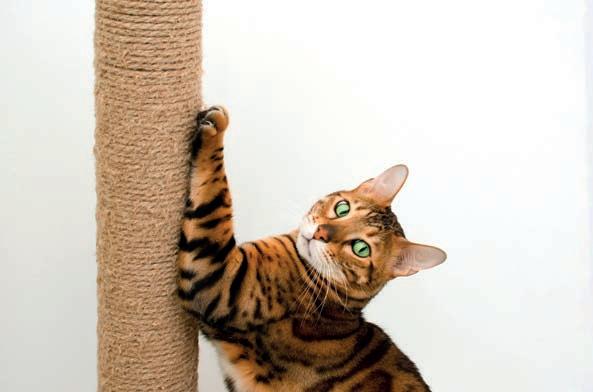
Your cat needs a diet that’s properly balanced, containing all the nutrients he requires in the correct quantities. Feeding a good quality commercial food is the easiest and most convenient way to do this. Whether you feed wet or dry food, or a mixture of the two, is down to the personal preference of your cat.
There’s plenty of choice, not just in flavours but formulations for different ages, lifestyle, and any health issues. You’ll find details on the packaging as to how much to feed, but remember these are just guidelines. Bear in mind that providing the right amount is as important as feeding the right grub — it’s estimated that 39 — 52 per cent of cats in the UK are overweight or obese, so keep an eye on your cat’s waistline!
We are all far more aware these days of the importance of mental health, and it applies just as much to pets as to humans. Providing puzzle feeders and toys which he can safely interact with by himself will help, including a variety with different textures and ways of moving, or which have different smells such as catnip and valerian, will help keep him entertained and fulfilled. There are also motion activated toys and even toys controlled by an app on your phone, and videos for cats available on the internet. But not all enrichment needs to be hi-tech or expensive — don’t underestimate the power of a scrunched up ball of paper or providing an empty cardboard box to investigate. Watching the world through a window can be as absorbing as any video game if you provide a perch or shelf in front of it so they can see out. Growing a pot of cat grass to nibble at may also be enjoyed.
If you have a garden, consider making it a more enriching space for your cat, with places to climb, hide, stalk, and rest, intriguing scents to sniff at, and maybe a safe water feature. You’ll find plenty of suggestions online and it can be a great way of encouraging a wanderer to spend more time staying close to home.
If there’s one thing cats excel at, it’s snoozing, but when it comes to beds, you may need to trial different ones to find out what your cat’s preferences are about shape, size, and fabric. Some like hammockstyle affairs hanging on warm radiators, others a more open bed, while a nervous cat may appreciate an igloo type which increases his sense of security. It’s not just about getting the bed right either. Provide more than one, as cats like to vary the places where they nap, having up to five favoured sleeping places around the house.











There’s a lot of choice in litter and litter trays, but ultimately it is, as always, your cat’s preferences which will be the deciding factor in which you purchase.
Some like an open tray, others the privacy of a covered one which also means odour and visibility is kept to a minimum for you. However, don’t assume anything, especially if you have more than one cat. A covered tray may instead cause feelings of vulnerability about being confined in a small space with only one exit. Trays need to be large enough, ideally one and a half times the length of your cat from nose tip to the base of his tail.


Then there are self-cleaning trays, but they are often more popular with cat guardians than cats, who may be anxious about using them due to random movements or noises they make. Tray liners may also be more helpful to us than desirable to felines who can find them off-putting. That fabulous sense of smell which cats possess may also come into play if you use litter deodorants; a lovely fresh fragrance to us perhaps, but an overpowering pong to your kitty!

Spend time with your cat. Playing with a toy can be fun and fulfilling for both of you, and a wonderful bonding activity. But quality time engaging with your cat doesn’t need to be a full-on activity. It can also be simply sitting quietly together enjoying each other’s company, petting him if it’s something he likes, perhaps doing some Tellington TTouches or massage, or maybe doing something practical such as grooming. These moments are when you see your cat’s personality emerging and get to know each other properly; they are memories in the making, special times to treasure.
After sourcing the ideal tray, there is the matter of filling it. Many cats like clumping type litters, and this will at least be something you can both agree upon, as it also makes removal of soiled areas easier. Make sure you provide enough, to a depth of approximately 3cm. If you need to experiment with different types of litter, change slowly over a week to a fortnight, as cats may stop using the tray if there’s a sudden change.
Cats hate using a soiled tray, so remove soiled litter daily, and clean the tray completely at least once a week. Use hot water and detergent or a cat-friendly disinfectant, rinsing and drying thoroughly to ensure your cat isn’t put off using the tray by any lingering scents.
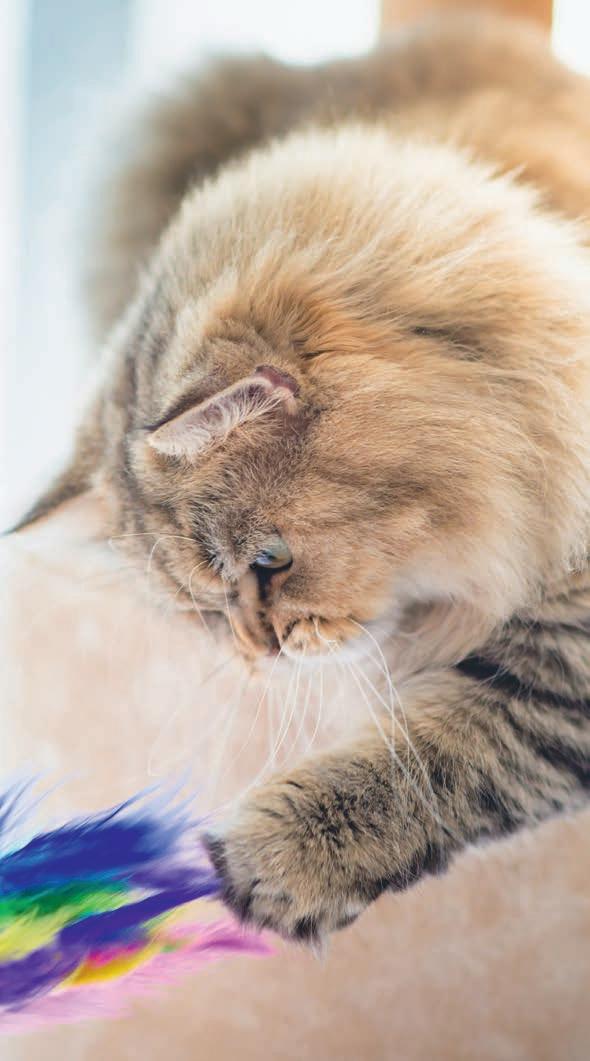
As well as getting the environment right, providing predictability, familiarity and routine help make your cat feel comfortable, reducing stress and increasing his coping abilities.
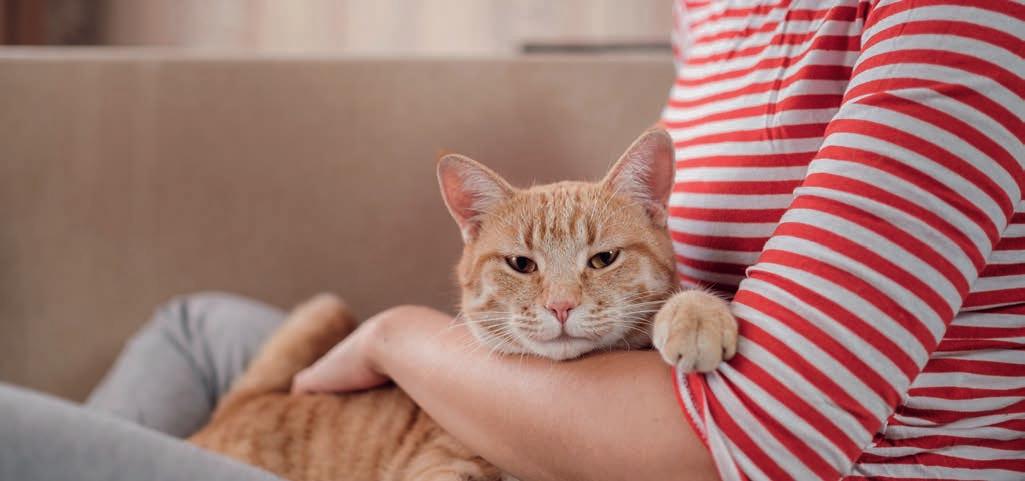
Sudden changes in eating or drinking habits can be a sign of ill health. Take him to the vet’s for a check-up if he suddenly starts eating or drinking more or less.
Cats are creatures,fastidious locate litter trays well away from food.
The dictionary defines the word manners as ‘social behaviour or habits’. We expect a great deal from our dogs and almost assume they will fit in with us and simply get on with it. Unfortunately, it is not quite that easy.
Natural canine behaviour can be incompatible with our own and we may find many of their (natural) habits unsociable. Digging up the garden, chewing the table legs, jumping up at visitors, barking, running out the door, and grabbing food from a plate are some behaviours we could consider unsociable and naughty.
I’m going to take you through the key exercises that will help your dog to fit into your busy way of life.
It may surprise you to know that the unsociable behaviours listed above are actually natural, healthy canine behaviours. It could be said that for a dog, what we consider ‘naughty’ is actually normal. Hey, it’s tough being a dog!
Dogs are expected to arrive at our homes knowing where
Rewarding your dog when he makes good choices will help him to repeat the behaviour in future.
to toilet, where to sleep, how to greet and, more than anything, what not to do! There is no guidebook for pet dogs to read, and they aren’t born knowing how to behave in our homes or how to interact with human beings.
Manners are also subjective: some owners may consider jumping on the sofa bad manners, whereas many welcome their dogs to sleep in their beds with them.
Everything that surrounds you is strange to the species known as Canis familiaris. An undomesticated dog may choose to dwell outdoors where a toilet is wherever he chooses; his food source is whatever and wherever he can find it; and when he feels uncomfortable, he can flee. Those choices are removed the minute he comes to live with us.
As dog owners, our role is to help and guide our dogs to make the right kind of choices — to teach and train them efficiently, but without causing further anxiety. A healthy dog is constantly offering various behaviours to establish what works for him, and a reward-based, force-free training club can really help here.

Training clubs are full of people like you. Once you speak to other owners, you can realise that rather than owning a ‘naughty dog’, your dog is displaying the very same actions as many others. A good club can help pet dogs deal with daily impulses and assist them with their manners when around the home, other dogs, and people.
At home, it is important to set up the environment so that your dog cannot make wrong choices. For example, leaving a biscuit unattended on the coffee table may be too much temptation for a novice dog. Once he has figured out what works, chances are he will be watching you to repeat it. So during the early stages of his training, keep counter tops free from food, put chewable items such as shoes and slippers in a cupboard and make use of dog gates. You are then smartly
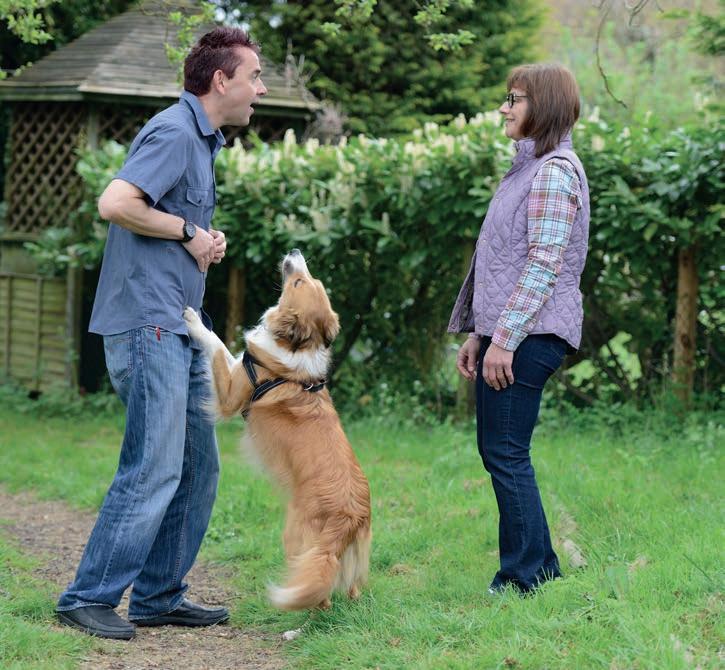

managing the environment so that your dog succeeds.

Of course, errors will occur, but don’t punish or reprimand your dog. Work out why something went wrong and teach him the behaviour that you want to see instead. Inform your dog that lying in his own bed pays off. Teach him that sitting is an excellent default behaviour — he can’t jump up if his bottom is on the floor! He will soon learn that choosing those options gets calm attention and maybe a treat.
If your dog is doing something that you consider to be bad manners, ask yourself if you have trained your dog so he knows what is expected instead. Remember that your dog will not arrive in your home already knowing your rules. Spend some fun time teaching him what you want — reward him well and he will reward you with good manners.

From time to time, we all wrongly focus on bad behaviour, but have you stopped to consider what you want your dog to actually do in your home?
There are hundreds of different bad or wrong behaviours your dog can choose to do at home. If you go along the punishment route, it takes considerable time and effort — and results in misery for your dog. Instead, try to focus on the few things you want the dog to do. Be proactive and teach your dog the required actions. For example, when visitors arrive, teach a sit for a greeting. When you are preparing dinner, teach him to lie in his bed. Show him his toys are more fun to chew than the table leg.




The bottom line is that if you punish one behaviour, you tend to create five additional unwanted behaviours. Unfortunately, during my home visits, I see it frequently.
The punished dog makes a bad association with the environment and, above all, the owner. Punishment and
reprimands can be a slippery slope and the bond and trust weaken rapidly. It is smarter and actually easier to positively reinforce the behaviours you want instead, so Rover chooses those in future.
When I am teaching owners to train their dogs, I often recommend a method called capturing. This is where, without prompting or use of a command, a dog makes a good choice. You spot it and your dog is then randomly rewarded with a tasty treat, some welcome attention, or both. You are then positively reinforcing the behaviour you want to see. It is really easy and only requires a little observation and timing.
Capturing is like taking a photo: it is instant and random. Many dogs only get attention when they are ‘naughty’. Their owner says their name and perhaps gives chase. However, if the dog decides to lie down quietly in his bed, he is ignored. Attention (and the odd treat) needs to be applied when he makes that good choice.
Remember, dogs repeat what works for them. Reward your dog’s considered choices and he’ll do them more often.
“
and reprimands can be a slippery slope and the bond and trust weaken rapidly.Dogs learn a lot about their environment from sniffing.

of bedding to burrow into.
Tiny Friends Farm Eco Bedding is an eco-friendly and sustainable bedding that is ethically sourced from surplus paper, virtually dustfree, and highly absorbent. After use, it is fully compostable making it environmentally friendly from start to finish.


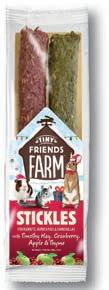










Of course, it goes without saying that hygiene is important all year round, but it needs particular consideration as temperatures head towards zero, because damp bedding can freeze. Water should also be checked twice a day to make sure it has not frozen and bottle insulators can be a useful addition to the cold weather product range. Owners should also be reminded to check the spout of water bottles, as the ball that helps to regulate water flow can freeze.

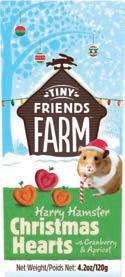

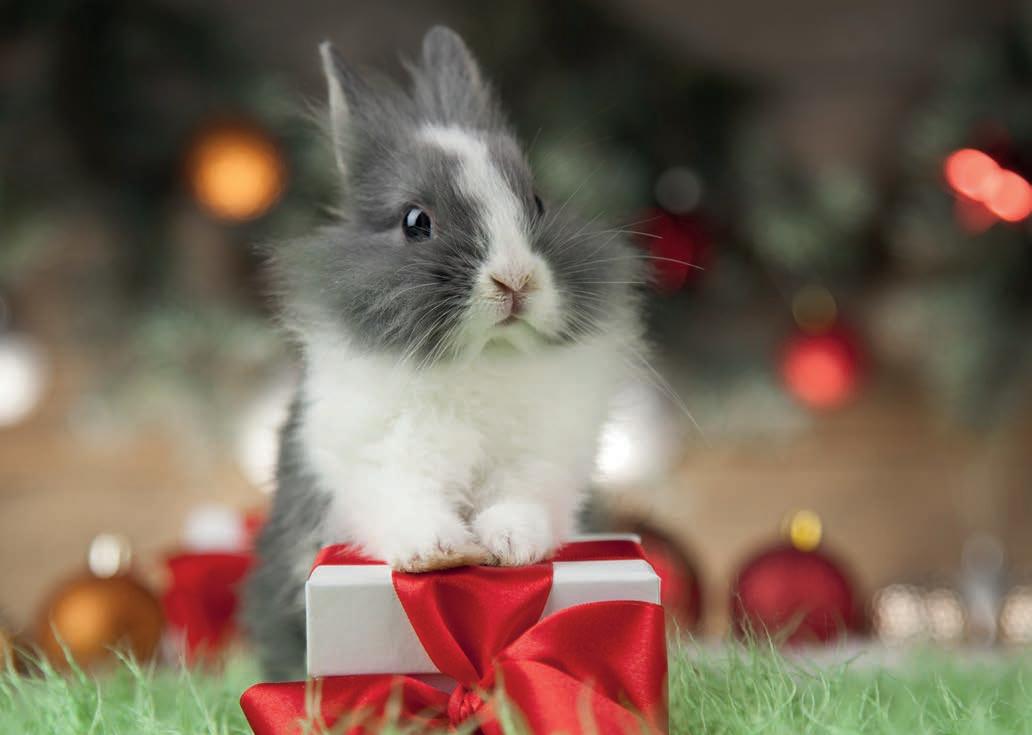
In addition to extra bedding to keep small pets cosy, feeding amounts may also have to be increased. This is because a drop in environmental temperature means the body has to work harder to keep warm, so energy requirements tend to be higher in the chillier winter months. Owners should be advised to adjust food amounts according to body condition and can be directed to tools like the the Rabbit Size-O-Meter (www. ukpetfood.org/resource/rabbit-sizeo-meter.html). It is also a good way to increase bonding and general handling, so signs of illness are spotted more quickly.
Christmas is just around the corner and these next few weeks are an important time in the small pet category. UK Pet Food (formerly the PFMA) reports that the UK small pet population includes one million rabbits, 900,000 guinea pigs, and 600,000 hamsters, and the popularity of these pocket-sized pets shows no signs of abating. While the growth in pet ownership took off during COVID lockdowns, it is now largely driven by Millennials and Generation Z. This changing pet owner demographic has contributed to current humanisation trends, with more Millennials considering their pets as integral family members than any other age group, so helping drive growth in the small pet category.




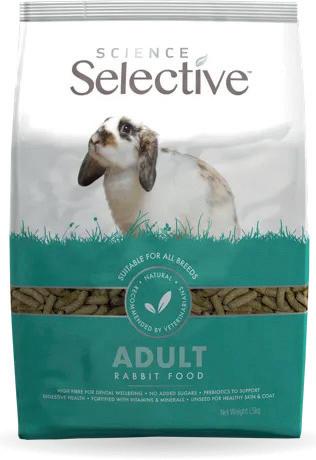

So, what does this mean for the festive season? It may come as no surprise to pet retailers that according to Mintel, in these cost-conscious times, 54 per cent of owners would prefer to cut back spending on themselves rather than their pets, while 40 per cent would spend as much on a gift for their small pet as on a friend. Pets are very much part of the family and owners want to include them in the festivities.
At least 75 per cent of pet owners buy Christmas gifts for their four-legged family members and impulse purchases are particularly common in the run-up to the big day. Maximising this significant retail opportunity with effective POS materials and sparkling in-store displays will help retailers tap into the festive market.

Whether owners choose to have a gift-wrapped present for their small pet under the tree or maybe even a stocking from Santa Paws, creating a display packed full of gifting ideas together with some product suggestions is a sure-fire winner. So, what might be on small pet Christmas lists?
Food is a central part of the Christmas celebrations for many people, so edible treats are a great place to start when it comes to gifts for small pets. However, with unique needs

and highly specialised digestive systems, it is important that festive diets do not alter too much from normal.

Supreme has a range of delicious Christmas treats that are tailored to the unique species-specific requirements of small herbivores. Fed in moderation, with a maximum of one to two treats per day, Russel Rabbit Christmas Trees make Christmas treat time healthy as well as fun. These crunchy baked bites are rich in natural ingredients and contain broccoli for an irresistible taste. Or how about Harry Hamster Christmas Hearts with tasty cranberry and apricot for an extra-special treat full of festive flavour? With Stickles with Timothy Hay, Cranberry, Apple and Thyme, and Stickles with Apple & Cranberry also on the Tiny Friends Farm festive menu, there is something to suit all palates. With eye-catching branding, featuring festive versions of the Tiny Friends Farm characters, the packaging has been designed with Christmas displays in mind.
And why not include Selective Naturals Berry Loops with Timothy hay and cranberry in the festive display? After all nothing says Christmas more than cranberry. Packed with festive flavour, Berry Loops are high in fibre and have no added sugar or artificial colours, for treating that is healthy as well as delicious.
Christmas gifts need not stop at the edible variety. With the trend to humanisation, there is an increasing focus on enriching the lives of small pets — great news for pets but also good news for retailers. Suggesting gifts for small pets that will provide environmental enrichment will benefit all and it is a good idea to stock a range of options to suit all budgets.
Snuffle mats are a popular choice and are great for stimulating natural foraging behaviours. Covered in lots of soft felt strands or ‘leaves’, which are perfect for hiding food pellets and small treats, pets can enjoy nosing and snuffling around to seek them out.
Or how about a new hideaway, perfect for small pets to retreat to? As prey species, small herbivores appreciate plenty of places to snuggle in, away from the festive hustle and bustle. From a cardboard tunnel, to a new house or hutch, the possibilities are endless.

Encouraging owners to prioritise their pets over the festive season will help ensure the needs of small pets are met, as well as boosting in store spend.
In particular, it is important that close attention is paid to housing requirements over the colder weather, with plenty of cosy bedding to keep pets snug. Indoor pets may not be exposed to the worst of the winter weather, but with noisy festive households, they will still appreciate having plenty
Most of this increase in food intake should come from high quality feeding hay such as Science Selective Timothy Hay. With reduced availability of grass over the chillier months, hay becomes an even more important source of high fibre nutrition, as well as being great for helping to keep hutches warm.
As well as hay, a carefully measured portion of speciesspecific nuggets such as Science Selective Adult Rabbit Food or Science Selective Guinea Pig Food should be offered every morning and evening all year round, to ensure that small pets get all the nutrients they need. Over the winter, this becomes even more important as reduced access to sunlight and the great outdoors can mean that vitamin D levels dip. As a forage that is left to dry in the sun, hay is a natural source of vitamin D, but the amount declines over time and winter hay may be lower in this important vitamin. Feeding a good quality species-specific concentrate that contains all the vitamins and minerals required is essential.
Giving your store a festive makeover can help to maximise Christmas retail opportunities. As the season of impulse purchases, eye-catching displays full of festive ideas can make a big difference to basket spend. You can include educational information and incorporate relevant products such as Supreme’s Christmas treat range and cosy winter bedding. And how about putting together species-specific Christmas gift boxes or stockings?
Supreme offer a range of options to support retailers, grab customer attention, and liven up displays including posters and FSDUs, care guides, and free samples. Free samples are a particularly effective tool with owners keen to try before they buy and when combined with money off next purchase vouchers or loyalty schemes, they can be a highly successful means of changing shopping habits.




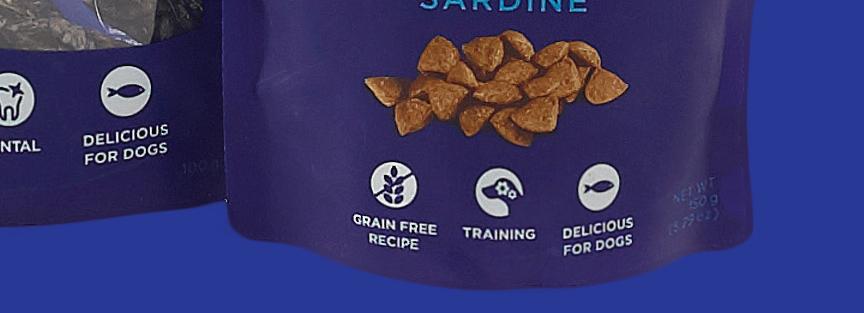





 John Courteney-Smith MRSB FLS Arcadia Reptile; Head of Science and Innovation/Author/Herpetologist
John Courteney-Smith MRSB FLS Arcadia Reptile; Head of Science and Innovation/Author/Herpetologist




The knowledge base behind effective and ethical reptile care is advancing daily and progressing well. As a group of global professional keepers and pet parents, there is a vast push towards learning ever more about the correct care of these highly developed sentient species and a level of dedication towards the implementation of positive change. Of course, this process is driven by and made ever easier with the move towards pure-naturalism by looking at wild habitats, suppliers, and behaviours, and then by using these to set up systems of care within terraria and vivaria. As a hobby, we no longer have ‘evolution of care by decade’, but rather more accurately ‘evolution of care by month’. This is how fast the pace of understanding and implementation is moving — and so should it!
As reptile keepers, it has been normalised to use supplement powders when feeding our captives. Of course, and over the history of our hobby, it has been these powders that have allowed life to continue for some, especially when we did not have access to the technology required to replicate wild habitats and the suppliers that exist within these habitats. Things are different now and we now enter a world where supplement powders which were ‘saviours’ must now be developed as and used as ‘tools’ that help to make up for any shortfall between the suppliers that exist within the wild terrain and that of the captive environment.
Furthermore, the clue regarding correct use is not even hidden within the name supplement. A supplement is an addition that makes said process more impactful, safe, and/ or lasting. A supplement should therefore never be thought of as being life sustaining, but rather an addition that helps us push away from the premise of ‘survive’ and towards the ethical goals of ‘thrive’.
As an example, in the bad old days, we relied upon strong doses of oral D3 being used frequently as we did not have means to allow the animals to create and self-regulate D3 naturally via exposure to the correct quantity and quality of UV lighting. This was a shortfall in technology and therefore we relied upon vitamin powders, developed from those used in agriculture to provide essential nutrition which allowed life to continue. However, being a non-natural process for most species this was fraught with risks. We risk the species ability to process said D3, we risk dangerous over and under provision as no one knows how much D3 is required per species, per sex, per season, or weight and we risk the omission of all of the other systems and processes that are used or used within the natural production of D3
after UV exposure. In this way, we can see that providing the correct quantity or index of UV and within the terrestrial wavelengths, per species and akin to that experienced in the wild, must therefore be the more effective solution. Why is this?
sustains life, but it is only really bioavailable and usable when supplied in balance with all minerals. It not only helps to ensure naturally strong bones, helps to avoid diseases such as MBD, works within organ function, nerve and muscle function, and much more, but it is only one mineral, and the earth provides the full quantity of minerals within the diet, water, and terrain (geophagy).
Well, if the animal is indeed receiving the right quantity of energy and within the full-spectrum of terrestrial daylight, it is able to make D3, self-regulate this process and recycle any over production. In this way, we allow the animal perfection of use and the need through the balance of self-regulation for oral provision reduces towards that of the wild level.
So, is there a wild level/provision of oral D3 for most reptile species? Well, for most of those kept there actually is. Why is this? Because most species are more properly thought of as being opportunistic omnivores that are also highly insectivorous, or that they are simply opportunistic omnivores. I have written many times before in this publication how even the leopard gecko does catch and consume other small reptiles, amphibians, nest fallen birds, avian and reptilian eggs, as opportunity arises. Therefore, it is perfectly natural to use a small quantity of oral D3 within the usual insect-based diet as this would replicate that odd feeding of a whole animal in the wild and instil a further level of natural balance. For some species, we could even use the odd pink mouse a handful of times a year. The result would be the same. These species are therefore supplementing the diet with as much variety as possible, as opportunity arises. We also have some new research that suggests that many insect species can produce and pass on D3 after exposure to the sun, this leads into the realm of D3 ingestion from D3 carrying inverts, again, something to ponder upon.

The other issue that we still suffer with is our dedication to, and almost worshiping status of, calcium. Speak to any reptile keeper and they will bore you until the cows come home about D3 and Calcium. Yes, calcium is 100% vital for life. I have written numerous books on this subject and have written thousands of words on calcium. It’s a vital tool that
The risk here is that we continue to be so blinkered with our insistence about the use of calcium that we still enact poor provision overall due the omission of the rest of the earth’s minerals, and in balance. Life is all about balance and the balance that all life has developed towards using. We know that magnesium is just as important to the fight against MBD as calcium. Indeed without the correct provision of magnesium, calcium can either be not assimilated and stored correctly (in the bones), or if provided with too much D3, calcium can be stored wholly incorrectly in the fats and muscles tissue where it does not support life, but can cause early death in advanced cases. So, magnesium is essential, absolutely! But it is only as essential as iron, sodium, phosphorus and all of the other minerals found in soil. When provided in natural balance the bioavailability of ‘mineral supply’ increases. Provided out of balance and it decreases, it is this that leads to poor biological function (disease).
As always, the key is in natural balance. We must view the provision of minerals and vitamins within natural balance and use them as a tool within modern care to improve life, to make up for the shortfall between the wild and captive providers. We can help this by using natural clay-based powders, feeding as much variety of live, fresh, whole animal species as we can, and then make sure that insects are properly gutloaded, hydrated, and even warmed and illuminated.
We must look at every aspect of care as pieces of a giant puzzle and then slot them together to give us the overall view of how we care and use evolving tech as it arrives to ensure that we are providing all aspects of care in a wild-like way. This, of course, includes using larger caging, correct decoration, and eliminating as much fakery as possible. Yes, the incorrect provision of care can enforce epi-genetic change and limitation, but the correct provision of care can quickly override this and allow animals of all species (our own included) to live a more natural, productive life.
Supplements are tools, not saviours, and we need to become more adroit in their effective, ethical use.
“
“
As always, the key is in natural balance.Adam Bernstein Writer/researcher for


Recent reports of an acute shortage of hormone replacement therapy (HRT) in the UK has highlighted the considerable difficulties that symptoms of the perimenopause or menopause can create for women, both in their personal lives and at work.
Employers are increasingly aware of the need to engage with and offer support to menopausal staff, not least because women over 50 are the fastest growing section of the UK workforce. Recent research, conducted with the assistance of the Fawcett Society, found that eight out of ten women say their employer has not shared information, trained staff, or put in place a menopause absence policy.
Adam speaks with Joanna Chatterton, who is a partner at the law firm Fox Williams, about support at work for women going through menopause.

The menopause is generally defined as the period when menstruation ceases following hormonal changes. The period of time over which this occurs can vary extensively, although it normally occurs between the ages of 45 and 55.
The stage before menopause is known as perimenopause, which typically has similar symptoms but can begin much earlier than the menopause itself and can last many years.
Common symptoms associated with the perimenopause and menopause include irregular periods; fatigue; night sweats; hot flushes; brain fog and concentration problems; anxiety and depression; mood swings and panic attacks.
The nature of the symptoms and the length of time they may last (which will fluctuate from employee to employee) may

have a significant detrimental impact on an employee’s ability to perform their role. Indeed, one in 10 women who worked during their menopause went as far as leaving their job due to their symptoms according to the Fawcett Society research. These departures may well lead to a knockon effect on diversity targets and the loss of accumulated knowledge and specific skill sets of senior employees, which could be hard to replace in a competitive labour market.
issues relating to the menopause into an action plan:
Initiate positive conversations



An important initial step for employers is to break the taboo that can often surround the topic of the menopause, either because of employee embarrassment, or a lack of understanding of what is involved and the impact it can have on employees. Providing employees with accurate information and an opportunity to openly discuss menopause issues will encourage colleagues to talk about their experiences and perhaps ask for help at an earlier stage.
One way to achieve this is to host guest speakers on menopause-related topics, with encouragement for the entire workforce to attend. Although it may be difficult to achieve, engagement from male employees can go a long way to making staff feel that their employer is offering genuine support.
The House of Commons Women and Equalities Select Committee has also reported survey results showing that symptoms have led more than a third of women to miss work. Whether or not an employee needs to take time off work, managers may also notice a change in a menopausal employee’s performance levels, engagement with their role, and/ or interaction with colleagues, which will require sensitive investigation.
Given the impact for employers, it is recommended that they take a number of key steps to turn awareness of workplace
Menopause-related tribunal cases have steadily increased over the last few years, with 10 cases citing the menopause in the first six months of 2021 alone. These decisions demonstrate that one employee’s idea of banter may be viewed by another employee as sex, age, or in some cases disability discrimination (if symptoms are sufficiently debilitating that they meet the definition of a disability under the Equality Act 2010). Badly handled conversations or ill-conceived jokes about symptoms such as hot flushes can quickly overstep the mark into employee harassment. It is important to remind employees that professionalism is always expected at work and that inappropriate behaviour relating to the menopause will not be tolerated.
A workplace menopause policy presents
an opportunity to explain the support and guidance on offer to employees, who their first point of contact should be to discuss any menopause-related issues, and the positive way in which they can expect things to be handled. However, simply producing a standalone policy, without taking further action to ensure that it is embedded in the organisation, is likely to be a pointless exercise.
Once a policy has been introduced, targeted training for managers and supervisors will further bolster its contents and the employer’s aim of supporting employees. Most managers will also benefit from guidance on how to have difficult conversations (not necessarily just in relation to the menopause) and the importance of handling things sensitively and with respect. This is a useful workplace skill with longer term benefits for those in leadership positions.
Employers who are aware that they have menopausal employees should consider conducting health and safety risk assessments to identify any specific issues or risks that are likely to have a negative impact. As well as good employment practice, this is an important part of an employer’s broad duties to protect the health and safety of its employees. Consideration should be given to whether any adjustments can be made to the working environment to assist with symptoms. The solution may be practical and relatively simple — the provision of a desk fan or moving a desk closer to a window to assist with hot flushes, for example. Alternatively, a dedicated rest area so employees can take time out away from colleagues.
It may also be necessary to consider adjustments to an employee’s working pattern, to provide flexibility when symptoms are particularly difficult. The option to work from home and avoid crowded public transport may be particularly helpful. If an employee’s symptoms amount to a disability under the Equality Act, then there is a legal obligation on the employer to make reasonable adjustments to alleviate any disadvantages caused.
Manage issues appropriately
Issues associated with menopause symptoms are likely to engage and cross over with an employer’s pre-existing HR policies. For example, time off work will involve a sickness absence policy; a downturn in performance due to ‘brain fog’ may impact on annual appraisals or engage a performance management policy. In all cases, care should be taken to ensure that internal policies are followed in the normal way and that there is no difference in treatment of the menopausal employee (compared to a male employee with a medical condition, for example).
The need for employers to engage with the impact of the menopause on the workforce is likely to gain momentum. The outcome of a recent inquiry held by the House of Commons Women and Equalities Select Committee was published at the end of July. It may lead to legislative change, among other developments. One of the issues under consideration was whether there is a need for the current law to change to provide specific menopause protection.
There is an additional financial incentive for employers to take early supportive action. It may avoid costly grievance and discrimination proceedings further down the line.
“ An important initial step for employers is to break the taboo that can often surround the topic of the menopause...independent businesses.
the 15th week before the week the baby is due (the ‘expected week of childbirth’), which is when a woman is around 25 weeks pregnant. It is, however, recommended that the employer is told early as it is only once they have knowledge of the pregnancy that an employee is protected by law.

While there is no protection against pregnancy discrimination unless an employee is pregnant, they may have a claim for sex discrimination if they are treated less favourably because they are planning a pregnancy or undergoing fertility treatment.
While the majority of employers know their obligations to pregnant women, a number brush over their duties. And for pregnant women, there’s the worry that they may somehow be disadvantaged by virtue of expecting or trying for a child.
Lawyers Paula Chan and Emily Plosker examine 10 potential flashpoints for both employers and employees.

The law does not require an employee to tell their employer they are pregnant until
A woman planning a pregnancy may find it a good idea to notify their employer, especially if the process of becoming pregnant is causing stress or affecting their work. It may also be sensible for a woman to speak to their employer if their journey involves fertility treatment which may involve the need for time off work and/or medical treatment.
A pregnant woman will have some or all of the following rights: In overview, they include paid time off for antenatal care; a workplace risk assessment; maternity leave (employees only); statutory maternity pay or maternity allowance; shared parental leave (available to employees only where the co-parent meets certain eligibility criteria); statutory shared parental pay
(employees only); protection against unfair treatment (usually referred to as pregnancy detriment) and dismissal (employees only but there is separate provision which protect agency workers); and protection against discrimination — for workers as well as employees.

A pregnant employee will normally be asked to attend an ante natal appointment when they are around eight weeks pregnant and scans at around 12 and 20 weeks. After the first antenatal appointment, the employee will need to show their employer evidence of their pregnancy (MAT B1 form) and the appointment card (if requested).
Pregnant employees and agency workers have the right to take paid time off to attend antenatal appointments (i.e. scans, medical appointments but also antenatal or parenting classes if recommended by a doctor). Certain employees and workers have the right to take unpaid time off to accompany a woman to an antenatal appointment.
An employer is only able to refuse time off to attend an antenatal appointment where it is reasonable to. However, there is no guidance in the legislation or case law detailing what is reasonable. But where there has been an unreasonable refusal, a woman may have a claim in the Employment Tribunal either in relation to the refusal or a broader discrimination claim.


All employers have a legal duty to protect the health and safety of their employees and any persons who are affected by the employer’s work or business. It is a legal requirement for all workplace risk assessments to include risks to female workers of childbearing age, even if there are no pregnant employees at the time of the
risk assessment.
Once an employer has been told about a pregnancy, they should immediately check their existing workplace risk assessment to ensure that it is still valid and does not require any significant changes.


Where the work is of a kind that could cause a special risk to a pregnant employee, employers have a legal duty to assess workplace risks to new or expectant mothers or their babies; alter the employee’s working conditions of hours of work to avoid any significant risk; or in the alternative, to offer suitable alternative work on the same terms. If there is no suitable alternative work, they must suspend the employee on full pay.
If an employer fails to carry out a risk assessment, or ignores any of its findings, this could give rise to an Employment Tribunal claim for maternity, pregnancy discrimination, or sex discrimination in the case of breastfeeding mothers.
The Health and Safety Executive (HSE) has a guide at www.hse.gov.uk/mothers/.
While it is unlawful for an employer to make a woman redundant because they are pregnant, they can be dismissed if they are genuinely redundant. If a woman is made redundant because they are pregnant, she will have various potential Employment Tribunal claims, including a claim for automatic unfair dismissal and pregnancy discrimination. A claim of this nature means uncapped compensation at the Employment Tribunal.
Women selected for redundancy while on maternity leave have special legal protection. They have the right of first refusal to any suitable alternative vacancies, without any competitive process or the need to attend an interview; they effectively jump the queue ahead of other potentially redundant employees.
When expectant mothers start maternity leave will generally be a matter of personal choice. However, they cannot start maternity leave before the 11th week before the expected week of childbirth (around 29 weeks in the pregnancy).
There are two exceptions to this rule. First, if a woman is absent from work for a pregnancy-related reason after the fourth week before the expected week of childbirth, but before the planned start date for maternity leave, the maternity leave will begin automatically on the day after the first day of absence. Second, if the baby is born early the maternity leave will start the day after the baby is born.
Employees are entitled to up to 52 weeks maternity leave. The first 26 weeks are referred to as ‘Ordinary Maternity Leave’. The second 26 weeks are referred to as ‘Additional Maternity Leave’. Employees continue to accrue paid holiday during their maternity leave, and some employees choose to add their accrued holiday entitlement to the end of their maternity leave to extend the period of time off before returning to work.
Employees may also be entitled to exchange up to 50 weeks worth of their maternity leave for shared parental leave, a form of leave that may be shared with a co-parent.
Employees with at least one year’s service are also entitled to up to 18 weeks unpaid leave for each child up to the age of 18, for the purposes of caring for that child. The benefit of taking parental leave (unpaid) is that the employee has certain contractual rights during that time and also have the
“
“ All employers have a legal duty to protect the health and safety of their employees and any persons who are affected by the employer’s work or business.
right to return to the same job (or suitable alternative job).




Employees with 26 weeks continuous service when they reach the end of the 15th week before the expected week of childbirth are entitled to Statutory Maternity Pay.
This is 90% of the average weekly earnings (before tax) for 6 weeks; and £156.66 or 90% of average weekly earnings (whichever is lower) for the next 33 weeks (the rate of pay increases in April each year).

See www.gov.uk/maternity-pay-leave

An employee may also have an entitlement to enhanced company maternity pay. This might mean an entitlement to a period of full pay, or a combination of full pay and half pay for example.
The self-employed may be able to receive between £27 to £156.66 a week for 39 weeks depending on how many Class 2 National Insurance contributions that have been made in the 66 weeks before the baby is due.
See www.gov.uk/maternity-allowance


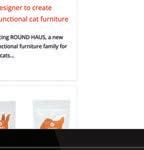





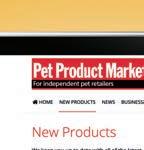


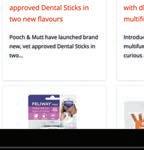

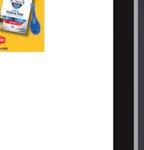
Any employee who feels that they have been discriminated against will need to decide on their strategy, depending on the strength of their case and the outcome they are looking to achieve. What is right for one person, may not be right for another.



If the discriminatory behaviour is something that could be resolved and the employee wants to stay, raising a grievance and starting Employment Tribunal proceedings may not be the right step as it can be difficult to maintain the employment relationship if there is a dispute.

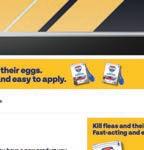
If the discriminatory behaviour is having a significant impact on career prospects because of the pregnancy or maternity leave, or the employee’s health or that of their baby, then more formal action may be necessary.
The first step normally means raising a formal grievance. Not only will this put on the record the complaint and will require the employer to act, but it will also protect the employee going forward from any retaliatory treatment.
It is important that, either before or at the point when a grievance or formal complaint is submitted, a record of the discriminatory treatment experienced is kept and any evidence is preserved, say, by ensuring emails are not permanently deleted.
It is also important to note that there are short time limits for bringing discrimination claims in the Employment Tribunal. Broadly, an employee has three months less one day from the discriminatory treatment (or the last incident if there is a continuing course of discriminatory treatment) to start a claim.
The process requires notification to ACAS along with the submission of an ACAS early conciliation form. ACAS has more detail at https://ec.acas.org.uk
Pregnant women have rights and employers have obligations and duties. In most cases an employee’s pregnancy will run smoothly. But when a situation occurs, there is no substitute for anything other than good legal advice.
“
“Women selected for redundancy while on maternity leave have special legal protection.



It is generally believed that cats can survive for around two weeks without food. Of course, this is assuming that they have access to water and are otherwise fit and well. But if a cat has a pre-existing health condition or is elderly then the amount of time he is able to survive reduces drastically and could be as little as 2—3 days. Of course, there are always exceptions to the rule and anecdotal evidence exists of cats surviving for many weeks. But the more time a cat spends without ingesting protein the weaker he becomes. His body starts going into shock, his metabolism slows down, and eventually his vital organs start failing.
If you’re asking why has my cat stop eating, there are potentially many reasons: perhaps he has eaten something that has upset his tummy and, just like us, needs a period of self-imposed temporary fasting until he regains his gastrointestinal equilibrium. Or there could be a more serious underlying issue such as pancreatitis, kidney disease, colitis, cancer, or even he could have an obstruction somewhere in his digestive tract. Any new medication can make a cat feel nauseous so that he doesn’t want to eat or could even be suppressing his appetite. If he’s a hunting type of cat, he might just have a tummy full of mouse, bird, or whatever his favourite natural delicacy might be. Or he could simply be suffering from indigestion or constipation.
We all know the misery that dental pain brings, so it’s not surprising that if a cat is suffering from toothache or some other oral complaint, he’ll be less likely to want to grasp and chew food. It’s quite common to see a reduction in the appetite of elderly cats due to a general slowing down of their metabolism too.
Cats that experience major changes to their routine and/or environment that cause them to become anxious or stressed, or even depressed, can start eating less or stop eating altogether, depending on the extent of their emotional distress. Finally, we all know how fussy some cats are about their food and if you’ve suddenly
introduced a new food into your cat’s diet that he doesn’t like and won’t eat, there’ll be no persuading him otherwise. If you suspect that your cat hasn’t eaten for 24 hours, it’s time to be concerned and contact your vet.

If
food, do this gradually over a period of about two weeks.
PDSA created this handy guide: www.pdsa.org.uk/pet-helpand-advice/looking-after-yourpet/kittens-cats/changing -your-cats-food2
We’re expecting a baby. How can I prepare my cat for living with a little one?


Cats need predictability and a sense of control to be happy. If your cat has never been socialised with babies and young children, you will need to get him used to their smells and noises, and give him lots of high places that they can safely watch from. Place treats in those locations so he has positive associations with them.
The environment is very important in providing the conditions for cats to adjust to stressful changes. Work out what routines you will be able to keep up with your cat once the baby arrives. For example, many new parents can still schedule a playtime in the evening, or you could substitute this for a calm grooming session or just time to spend together. Establish this routine now so he has some continuity.

If you need your cat to adapt to a new night-time regime, start this now too. Rather than just shutting him out of the bedroom you could, for example, initially avoid cuddling or petting him, then provide a nice cosy bed and place it near yours, gradually moving it out of the room.
can often get overlooked when it comes to being rescued. But there are so many positives to welcoming a senior feline into your home. Here are some reasons why you should consider a golden oldie as your new pet:
● A senior cat’s personality is fully established and those tricky ‘teenage’ years are long behind them. This means you will be able to choose a cat to perfectly suit your lifestyle as the rescue shelter will be able to give you a full rundown of its senior cats’ character traits.
● The furniture-scratching, curtain-climbing, and hunting antics will be capers of days gone by for many elderly felines, making them the ideal choice for the more houseproud owners.
● Most senior cats are already well-versed in household etiquette, meaning they know how to use a litter tray!
● Older cats are often much more content in the house and happy to chill with you, rather than tearing around causing mischief like kittens do.
● They have great personalities! While they may be slowing down, older cats will still enjoy play and will make you love them for their great characters.
● The feel-good factor. Remember, if a senior cat has found itself in a rescue shelter, you could be its last chance to find love. How amazing it is to offer a loving and comfortable home to a senior kitizen.
You can use Feliway to help create a reassuring environment. Or you could just decide where he should sleep longer term and put him in there with Feliway, a nice bed and a delicious treat. You must make sure he’s safe and comfortable, then if he tries to attract your attention avoid the temptation to respond.
Start closing any doors you will have to keep shut when your baby is in the house and reduce the impact of new baby items by putting them in a closed room and bringing them out one at a time. Make them smell less challenging by rubbing a cloth over your cat’s face and then on the new items. Also get a good quality recording of baby noises and play it at low volume when nice things are happening. Although most cats are perfectly safe around children, never leave your cat unattended with young children or babies — for both the children’s and the cat’s sake!
I am looking at doing some activities with my cat. I’ve read about trick training and target training, is there anything you would recommend? I’d like to give my cat something to focus on and a way to bond.
What a lovely question! Clicker training is an amazing way to engage, stimulate, and challenge cats, and you’re right, it can help create and strengthen the bond between cat and caregiver too.
Clicker training with your cat is a way of negotiating with him. Your cat performs the behaviour you want, and you reward him with a click and a treat. It’s a win-win. You may think that you’re the one in control, but from your cat’s perspective he’s the one training you to click, and as we all know, our cats love to manipulate us and as such makes this a really interesting activity for them. It’s especially beneficial for indoor cats who require extra stimulation. Cats of any age and type can be clicker trained, although you may need more patience with some than with others!
There are lots of resources out there, but highly recommended is Karen Pryor, the original cat clicker trainer. She has her own website with a huge amount of information available. There are also lots of cat clicker training videos on YouTube to help you understand the technique.
The basic premise is to reward your cat for a behaviour that you want him to perform. You do this by using a small device called a clicker which, when pressed, makes a click sound. The idea is to press the clicker as soon as the behaviour has been performed and immediately give your cat a treat. Each time a cat hears the click, he knows he will get a reward. Make sure that before you start, you have a handful of treats available in a plastic container and that those treats provide enough motivation for your cat to work for them.

The first few sessions should consist of simply clicking and giving your cat a reward, waiting for him to eat it and repeating a number of times. This is just to create an association between the sound of the clicker and a reward.
After this, you can start using the clicker for any positive behaviour that you would like your cat to perform such as sitting, giving you high fives, using his scratching post, the list is endless.
If he gets bored or full up, he might walk away, and if so, the session should end. Each session should last just a few minutes.
Clicker training is not ‘training’ in the sense that are cats are obeying our commands, because we all know you can’t tell a cat what to do! It is however a fun and enjoyable rewards-based activity.
The answer is: it depends. Territory, their indoor environment, their interactions with other cats and with us, as well as a cat’s inherent character traits can all play a role in his desire to stay put or roam further afield. Here we look at the types of reasons cats would want to stay out.
Cats are a self-reliant, survivalist species and while many have adapted to our human rules and regulations, there are those that are naturally free spirits. These cats will be desperate to go out when given this freedom and will wander far and wide enjoying the feeling of being in control. And then there are the highly territorial cats that as soon as they’re allowed outside will want as much of it as they can get and once established, will spend hours defending it.
At the other end of the spectrum, there are the food mad cats that make straight for the nearest well-intentioned cat feeder where they know there’ll be a plentiful supply. And who knows how long they’ll stay there for.
If you have moved house, and your new home isn’t very far from your former home, it’s possible that your cat might return back to where he was always king pin of his territory, instead of going to the bother of establishing a new territory.
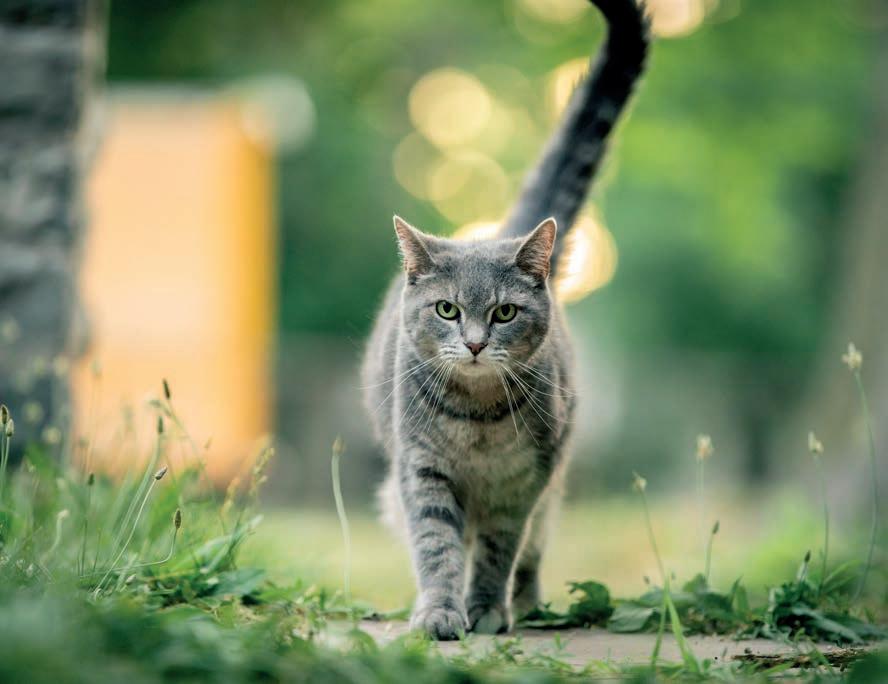
he gets his chance at freedom, will send him running for the hills. Top of the list is other cats. This could be a feline housemate with whom he simply doesn’t get on and/or a multitude of neighbouring interlopers invading his garden and sticking two paws up at him every time he looks out a window. These cat-created pressures might be more than enough for him to want to set up home and territory elsewhere.
And then there’s the sobering reality that there’s something about you and the way you behave with him that he’s really not very keen on. So, he’ll find a home where the interactions between him and the humans are different. Or perhaps the indoor environment isn’t allowing him to express his natural feline behaviours, such as having somewhere to hide, scratch, play, be up high, and toilet in privacy.
In terms of a cat’s indoor environment, there could be any number of things about it that, once
One of the most difficult things about cat ownership is our lack of control over their wanderings when they step paw in the great outdoors. But by creating an indoor environment that meets their species-specific needs and avoids many of the conflicts above, and is home to his resources and is a stimulating environment, we’re giving them every reason to come home. Many cats do come home — and that will be because he wants to, which is the greatest reason of all.
When we play with our kitten, he sometimes

volunteer Debra Peltz, until his forever home could be found.

“Everything happens for a reason,” continued Hayley, who, aged just 11, trained her family dog, Bo, a Border Collie X Labrador, to pass his bronze, silver, and gold Kennel Club Good Citizen Awards.

“My first thought when I saw Bruno was that he was a lot smaller than I expected. He had the friendliest, cutest face and was excited by everything.”
However, Hayley had two main worries: firstly, that the pup would be fearful of many sights and sounds, and secondly — and most crucially — that he wouldn’t get on with Rocket.
“On the way to meet Bruno, I had a word with Rocket in the car, telling him: ‘Now look, don’t mess this up!’,” continued Hayley, whose initial concerns evaporated when Bruno greeted her confidently with an enthusiastic lick on the face.
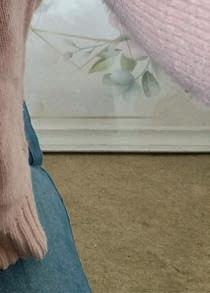
“The two dogs got on instantly and ran around playing like they had known each other for years.”

A week later, and with the paperwork in order, Bruno arrived at his new home in Aldershot, Hampshire. At first, the black street dog was reluctant to go in Hayley’s house, instead preferring to stay outside in the garden.

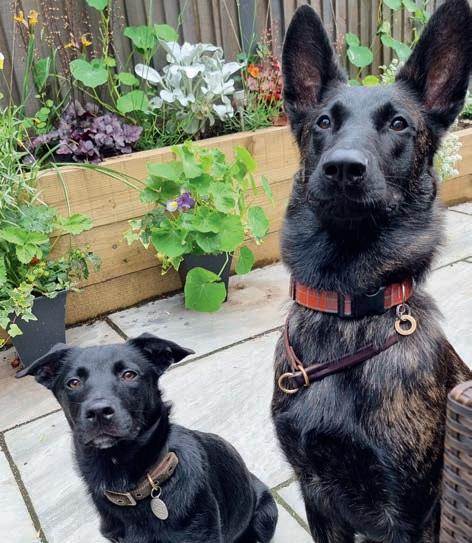
“But by the following day, he had totally settled — it was as if he wanted to sleep on it,” said Hayley, who added that a DNA test has recently revealed Bruno is a mix of 22 different breeds, but mainly terrier. Just two months on and the now eightmonth-old puppy has already established a close bond with Hayley, who continued: “Ninety per cent of the time, he has the soul of an old man, and is delicate in everything he does. Then, at 7pm every evening and on walks, he suddenly has the zoomies! I have never allowed dogs on the sofa but I’ve given up with Bruno! I wouldn’t be human if I kicked him off!”
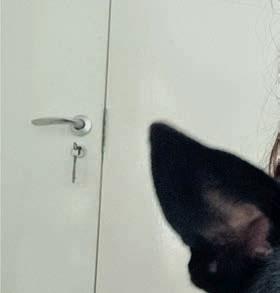
A puppy rescued from Romania is now helping to brighten the lives of residents in a Surrey care home.
Joanne Bednall reports.
With her heart firmly set on adopting a rescue as a companion for her Belgian Malinois, Hayley Flynn felt disappointed and deflated when most of the charities she approached failed to reply.
But just when she was on the verge of giving up, a Basingstoke-based non-profit animal rescue not only acknowledged her application but responded that very same day.
“I applied to loads of rescues in the UK but many didn’t get back to me,” explained Hayley, who’s 22.
“But Helping Dogs and Cats UK Rescue contacted me straight away, and I actually got to speak to a real person rather than just filling in forms online.”
Hayley explained that she initially applied to the organisation for a Belgian Malinois called Zoe, thinking she would be the ideal match for 18-month-old Rocket, but a family in Germany pipped her to the post. Then, just as Hayley was about to apply for a “big, fluffy, wolf-like dog”, the commercial import of pets from Belarus, Poland, Romania, and Ukraine was suspended, and she lost out again.
So, when Hayley heard about a sixmonth-old puppy called Blizzard, who had arrived in the UK from Romania with his siblings before the borders shut, she hoped it would be third time lucky. It hadn’t worked out with his previous adopters, and the puppy, since renamed Bruno, had come into emergency foster care with rescue
Impressed by the positive effect her dog, Bo, had had on residents at the care home where she worked previously, Hayley was keen to take her next dog into the office.

“But Rocket would have found it too exciting,” said Hayley, who felt sure Bruno’s trusting, loving nature would endear him to both staff and residents at the animal-friendly Princess Christian Care Home near Pirbright, Surrey, where she works as the resident liaison officer.
“Just two weeks after having Bruno, I decided I’d give it a go. He was very keen to come with me and sat quietly in my office while I did admin.
“Then, in order to see colleagues in another office, we had to walk past the residents’ bedrooms. The man in the first room started whistling at Bruno, who went straight up to him, sat by his side and let him pet him.

“When Bruno met my colleagues, he was super-excited, jumping up and loving the attention.”
Hayley was blown away by her dog instinctively knowing the difference between elderly residents or those with dementia, and her co-workers.
“I couldn’t believe it — Bruno was a natural! He just picked up on the different vibes in the residents’ bedrooms and lounge and knew to be calm.

“Some residents are rude to people but gush when they see a dog. Even those for whom you think it wouldn’t be a good idea, become gentle, friendly, and calm when
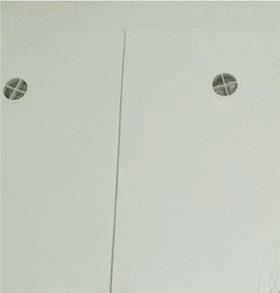
interacting with Bruno.
“One gentleman with dementia is convinced Bruno is his black Labrador puppy, Dennis, and doesn’t understand why he can’t do the tricks he taught him, like rolling over.”
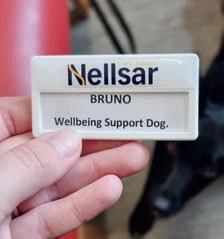
Bruno, who goes into work with Hayley every week and even has his own official ‘well-being support dog’ badge, has an uncanny knack of bringing out the best in people.
“Another resident is prone to loud, aggressive outbursts but loves Bruno and always wants him to stay for hours,” explained Hayley. “As soon as she sees him, she comes straight out of her room and follows us to the lounge, asking me for treats to give him.”
Bruno has even helped build bridges and open up dialogue with a new resident, who had become very depressed after a recent disability and didn’t like being in a home.
“He was in a wheelchair, uncooperative, and just wanted to go home,” recalled Hayley. “But as soon as he put his hands around Bruno’s face, he burst into tears.
He opened up about owning Jack Russell Terriers, and said that he thought people didn’t deserve dogs, believing them to be ‘too good for this world’.”
Hayley can’t believe her luck ending up with a dog that has fitted in so perfectly to both her home and work life, and has even had a calming effect on Rocket.
“It’s funny how things turn out,” she added. “Bruno is just the most loving dog and I’m so grateful to Helping Dogs and Cats UK Rescue for entrusting him to me.”
Nominated for an Animal Star Award 2022, Helping Dogs and Cats UK Rescue supports the local community in Basingstoke and the wider area by rehabilitating and rehoming animals, as well as helping dogs and cats in Romania. For more information about fostering or adopting a dog, or to donate towards shelter, transport, veterinary, microchipping, spaying, and neutering costs, visit www.helpingdogsandcatsuk.org or call 01256 593373.
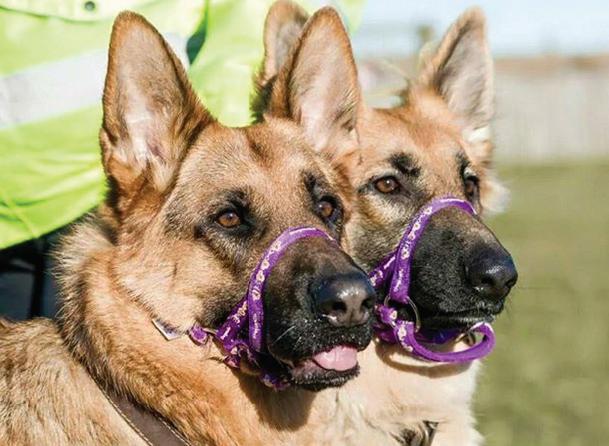


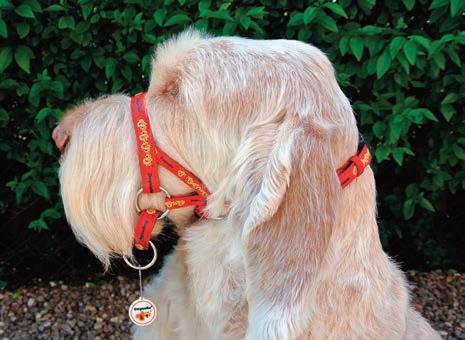



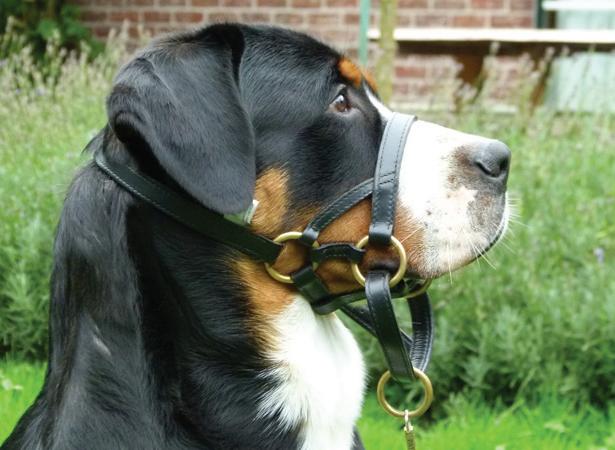
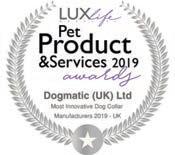






We don’t just protect against little things like fleas and ticks, we look after the little things people love most about life with their pets. That’s because we know that when pets are healthy and happy, owners are happy too – it’s as true today as it was in 1892. So, for our big birthday, we’re celebrating 130 years of all the little things that make pet parents smile. Because simply, without them, there is no us.

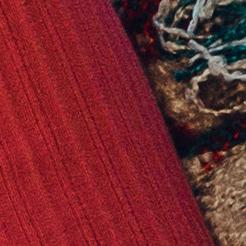





















t little thing s like fleas and ing s love most because we know that owners are 92. So, for our big ll the little



